This is the most complete, epic guide to diet on the web. Especially if you want to lose fat, or build muscle. Based on all the latest science.
Reviewed by: Antonis Damianou (myoleanfitness.com), Brandon Roberts (thestrengthguys.com, tailoredcoachingmethod.com), Adam Tzur (sci-fit.net), Greg Nuckols (StrongerByScience.com, MASS Research Review), Steve Hall (ReviveStronger.com), Jacob Schepis (JPS), Brad Dieter (sciencedrivennutrition.com), Jason Cholewa (Jasoncholewa.com), David Nolan (HPA Podcast), Thomas Campidell (campidellcoaching.com), Nelly Sta. Maria Ph.D, and Abel Csabai (Sustainable Self-Development Podcast)
Key Points:
- Why tracking macros works:
- The 3 macronutrients (protein, carbohydrate, and fat) each have calories (4, 4, and 9 calories per gram). Plus, alcohol has 7 calories per gram.
- You lose or gain weight based on changes in energy balance. When you take in more energy than you burn, you gain weight. And vice versa.
- Macro tracking can help change your weight over time. Mostly because it forces you to track calories (i.e. energy).
- Step 1: Find out how much you eat:
- Writing down what you eat is the crucial first step to tracking macros.
- You can’t manage what you don’t measure. So, if you plan to change your food intake, then you should track it first. At least for a while.
- Tips to help track your macros:
- Using a food scale can help you check how much you’re eating.
- To be more accurate, it helps to track everything you eat. As soon as you eat it. If not before you eat it.
- If you have to eat out, that’s no big deal. Since taking pictures of the food can help you guess how many calories you eat. And many restaurants list out the macros, on their websites.
- Step 2: Find out how much you weigh:
- It may help to weigh in daily. Then write down your average body weight, for each week.
- No single weigh-in means all that much. Since, today’s weigh-in can’t show you the trend in your weight over time.
- Weigh-in at least 3x per week (see “weigh-in guidelines” infographic).
- If your average weight is stable for a while (e.g. ≥4 weeks), then you are roughly at “maintenance” calorie intake. At least, on average. Unless you’re gaining muscle and losing fat at about the same rate.
- Step 3: Learn the basic nutrient values for each food:
- You should eat every macronutrient, in some quantity. That is, make sure you get at least some fats, carbs, and proteins in your diet.
- To build muscle, you need to get in enough calories and protein. And, you need to lift weights. With a progressive workout program.
- Fat:
- Fats are very high in calories. So, it may be easy to overeat on fats.
- Odds are you should eat some fatty fish on a regular basis. Or at least take fish oil.
- Don’t eat trans fat. (Modern food regulations mostly take care of this for you).
- In general, avoid eating too many processed foods. Since these may promote fat gain/obesity.
- Protein:
- Meat and dairy products are some of the best protein sources.
- Eating more protein can blunt hunger. And help you lose weight too.
- In general, protein helps you build muscle. If not lose more fat as well.
- There are many good protein sources to choose from (see table).
- Carbohydrate:
- Fruits and veggies tend to be good sources of carbohydrate.
- Many carb sources give you beneficial compounds. Such as vitamins, minerals, and phytochemicals. Which can help you avoid nutrient deficiencies.
- Alcohol:
- You don’t want to drink too much alcohol. At least, not regularly. And especially not when you’re dieting.
- But, if you must drink, read more on how to do so here.
- Step 4: Set a goal weight/look:
- Once you know your average body weight. And once you’ve got your calorie needs down, then you can start making changes. That is, you can now tweak your calorie intake, as to lose or gain weight.
- Sadly, it can be hard to find your calorie needs based on changes in your weight alone. As the “3,500 calorie per pound” idea is shaky. Hence, it’s a pain to guess how many calories you burn in a day. Especially based on body weight alone.
- In the short-term, your diet may not change your weight by a ton. Since there is some random variation in your weight anyway.
- The number of calories you burn each day will change over time. And in many cases, it shifts with your diet. But good for us, Kevin Hall and others made a model that can help predict how your body weight will change over time.
- Weight loss (“cutting/dieting”) notes:
- Aim to lose between 0.5% and 1% of your body weight per week.
- You may see a big drop in weight early on. And, that’s very normal. It’s just due to glycogen and water loss. Your weight should stabilize after ~2 weeks. At which point more weight loss is probably “real.”
- You can split your calories up as you like across the week. It won’t make a ton of difference, for the most part.
- Taking a week at maintenance calorie intake (“a diet break”) can help. Since this has been shown to help you keep more weight off.
- Look to eat ~1.8-3.4 grams of protein per kg body weight (.8-1.54 g/lb). Since that should be enough to max out muscle growth. And blunt hunger as well.
- Weight gain (“bulking”) notes:
- Aim to gain ~0.5%-2% of your body weight per month (~1-3 lbs/.45-1.36 kg). This should be enough to gain solid muscle.
- Muscle growth (drug-free) is a very slow process. Especially past the newbie phase.
- While you should aim to gain weight, you don’t want to gain too fast. Since most of that extra weight will be body fat.
- Split your calories up any way you want to. It’s also fine to eat a bit more on days that you train (e.g. +200 calories).
- You may want to eat lots of protein during your bulk. That is, up to over ~3 g/kg (1.36 g/lb) protein per day. Since some studies show this can help limit fat gain. If you can’t manage that, then just eat more like 1.76 g/kg (0.80 g/lb) of protein per day. And maybe fewer calories too.
- Avoid eating too much saturated fat or fructose. As eating too much of these can lead to more fat gain.
- Step 5: Find your ideal calorie and macro targets (w/ calculator)
- See section.
- Putting it all together (practical examples):
- See section
What is macro tracking?
“Macro tracking, in essence is just tracking calories. But, with the specific goal of hitting different macronutrient targets. In short, Macronutrients are the main nutrients from your diet: protein, carbohydrate, and fat. And these macros (+ alcohol) each have calories.
What are calories?
One calorie (technically, kilocalorie/ kcal) is the amount of energy you need to heat up 1 kilogram of water by 1 degree Celsius. Hence, the calories are units that we use to measure heat/energy.
Your “maintenance” intake is the number of calories you need to maintain your current body weight. And, when you eat more than this, your body’s energy stores go up. Or vice versa.
We need what’s called an “energy imbalance,” for your body’s energy stores to change…
Summary:
Macros are the main nutrients from your diet. And they contain calories. So macro tracking, is a more-specific form of calorie tracking.

Why macro tracking works:
We (humans) are all thermodynamic systems. Which means that our body’s energy stores, depend on changes in energy balance.
Put simply, if you eat more calories than you burn, you increase the body’s energy stores. And vice versa. Which, eventually, leads to changes in body weight/mass.
So, if you eat more calories than you burn, your body’s energy stores go up. And that leads to weight gain over time. Or weight loss, if your body’s energy stores go down.
This is because the first law of thermodynamics ensures that, when energy passes into or out of a system, that system’s internal energy changes. In accordance with the law of conservation of energy.
Which means, macro tracking gives us an easy way to change our body weight and composition. Since it forces us to track our calories (energy).
But, with that said, macro tracking is hard. And it takes some time to get the hang of. So odds are you’ll struggle with it early on.
Luckily though, this guide should help you get around all the problems with macro tracking. And with that, let’s dive in:
Summary:
Changes in bodily energy stores depend on changes in energy balance. To gain/lose energy (and thus, body mass), your energy intake needs to change. And macro tracking helps you change it.

Step 1: Establish your baseline food intake
Writing down what you eat is the key first step to tracking macros. You can’t manage what you don’t measure. So, if you plan to change up your diet, you should have a good idea about how much you’re eating. So, before you start making changes, I’d say just track your diet. At least, early on; for the first few weeks. And then you can start making changes.
Now, I recommend using the FitGenie app to start tracking your macros. You can learn how to here. (Note: track macros on these apps, not calories. Since they tend to underestimate your food intake. For any given macro targets (see here).)
It takes time to build up a good habit. But, tracking your calories for a while gets you familiar with the calories in each food. And that info is the key to staying fit long-term.
So, be sure to really track your food intake for a while. At least for a few weeks. And, track everything you eat – even the “little stuff”. Since it can be easy to miss calories from drinks, oils, snacks, etc.
For example, one study showed what you recall eating, “bears little relation to actual energy or nutrient consumption”. And other studies note that we tend to under-report how much we eat.
Summary:
Be sure to log your food intake for at least a few weeks. And then you can start making changes to your diet.
Take care to track everything accurately. Since we tend to under-report how many calories we eat.

Practical tips to track your macros:
1. Track it as soon as you eat it
It’s best to log your food as soon as you eat it. And, if the food has to be cooked, then log it raw. Don’t just wait until the end of the day to track your calories. Because your memory may fail you, and tracking right away leads to more weight loss.
2. Plan your meals early
Second, some find planning meals ahead of time avoids the stress of making food selections ad libitum, but ad libitum dieting can be very effective (for example, subjects who switch to the ketogenic diet often reduce food intake unconsciously). Anecdotally, some seem to thrive on meal plans, but they aren’t needed to improve body composition (see some potential benefits to a meal plan here). Tracking intake works better with a food scale (see here or here), especially for beginners. You need not use a food scale when eating out, but to properly assess your caloric intake, you need to know what you ate (food type) and how much (food weight). It is helpful to weigh your food before you cook/eat it (when possible) in order to learn what various quantities of any given food look like (see here). This allows you to estimate your food intake more accurately both now and in the future (without deliberately tracking intake). When eating out (see here for tips), taking pictures of your food to track later can help you better estimate its caloric content. Tracking macros can increase food cravings in some individuals, which may be problematic, but I think the benefits of tracking macros (for at least some time) outweigh any drawbacks.
Summary:
Log your food immediately after (if not prior to) eating it, using a food scale when possible. Plan meals ahead of time to simplify this process. Taking pictures of your food may help you better track intake when eating out.

Step 2: Establish your baseline body weight
I also recommend establishing the habit of weighing in daily. Again, you can’t manage what you can’t measure, and weight is the primary (surrogate) measure for tracking changes in body composition. Self-monitoring weight is also associated with better weight management. However, note that weight fluctuates considerably on a daily basis, so do not overreact to an unexpectedly high/low weigh in. Weight can fluctuate due to differences in stress levels, hydration status, menstrual cycle phase, bloating, carbohydrate/fiber/ sodium/mineral intake, food weight, and creatine levels. You should therefore establish a weekly or bi-weekly (baseline) average weight. Compare weekly averages, rather than daily weigh-ins, to ensure that you notice meaningful weight changes when you alter energy intake. If daily weigh-ins are impractical, then you should weigh in at least 3 times per week. Though useful, the scale is not the end-all be-all. I suggest you supplement weigh-ins with progress pictures (see how-to), because you might look better (if you’ve gained muscle) despite weighing the same/more.

How to Weigh-in Properly:
To properly weigh-in (tutorial here), use the same scale, wear minimal (or no) clothing, and weigh in under similar conditions each day (after using the bathroom, before eating/drinking anything, at roughly the same time). Do not weigh in after eating/drinking, at random times, or with different scales. True changes in bodily energy stores (usually) take closer to 1 week to reflect in the scale, so note the trends in your weekly average weigh-ins and make dietary adjustments accordingly. Once you have 4 weeks of food intake and weigh-ins recorded, then you can better estimate your maintenance calorie intake (based on average changes in weight over time).

Practical Example:
See (below) how any given weigh-in can be misleading. The following image is my daily weigh-in history. This image shows why any one weigh-in says little about the general trend in weight. 
As you can see, looking at 1 week of data (top left) makes it seem as though no meaningful changes are taking place. As we zoom out to 1 month (top right) of weigh-ins, we begin to see a trend, but there is still tremendous fluctuation between individual weigh-ins. As we zoom out to 3/6 months (bottom), we see a clear, downward trend in body weight, but we still see clear peaks and valleys over the weeks. This is why it is crucial to log weigh-ins daily and over the long-term. With only 2 weigh-ins per week, you might be severely mislead about the general direction of weight change. Similarly, if you zoom in on any single high weigh-in, you’d neglect the general trend over time. Meaningful changes in body weight/composition take time to manifest.
Summary:
Daily weigh-ins are extremely useful over time (after learning how to weigh-in properly). Do not put too much stock into any single weigh-in; mind the trends in weight over time and supplement with pictures to appropriately gauge progress. If your weekly average weight is stable over an extended time period (i.e. ≥4 weeks), then you are roughly at “maintenance” calorie intake on average (unless you’re gaining muscle and losing fat at roughly the same rate).

Step 3: Learn the basic nutritional values of foods
While establishing your average daily food intake and daily body weight over the weeks, it is important to learn how to read food labels. To track your macros, you need to know the calorie and macronutrient contents of various foods, especially if you eat them frequently. The 3 macronutrients are fats, carbohydrates, and proteins. Fat contains ~9 calories per gram, while carbohydrate and protein contain ~4 calories per gram. Fat intake is necessary to ensure sufficient essential fatty acid intake, absorption of fat-soluble vitamins, slower gastric emptying (which promotes satiety), and proper endocrine function over time. Protein consumption is necessary to some extent and beneficial in higher amounts. The recommended dietary allowance (RDA) for protein is .8 grams per kilogram (.36 grams per pound) of body weight, however I recommend consuming more because protein plays a vital role in muscle mass maintenance when dieting. Muscle gain is optimized by consuming between 1.6-2.2 grams of protein per kilogram (~.73-1 gram protein per pound) of body weight (determine your optimal protein intake here). Assume you weigh 150 pounds and want to maintain/gain muscle mass (with progressive strength training), then you should consume between 109 and 150 grams of protein per day. Carbohydrates are also needed (in very small amounts, albeit) for bodily function. Further, carbohydrates help maintain muscle glycogen levels, which aids athletic performance and muscular endurance. Additionally, vegetables/fruits are carbohydrate sources which provide numerous health benefits (perhaps due to their (often) high antioxidant, vitamin, mineral, phytochemical, and polyphenol contents).
Summary:
Fat, carbohydrate, and protein (9, 4, and 4 kcals/gram, respectively) are all beneficial to consume in some quantity. Eating sufficient protein and calories, while progressively strength training, promotes muscle growth over time.
Fat:
Some Examples of Healthy Fat Sources
| ➤Walnuts | ➤Cheeses | ➤Eggs | ➤Fatty Fish |
| ➤Almonds | ➤Chia Seeds | ➤Avocados | ➤(I.e. Salmon, |
| ➤Peanuts | ➤Hemp seeds | ➤Olive oil | ➤Mackerel, |
| ➤Cashews | ➤Flax seeds | ➤Olives | ➤Trout, |
| ➤Sardines | ➤Baking Chocolate | ➤Dairy Products | ➤Or Herring) |
Fats are easy to over-consume given their caloric density, thus you should track intake when consuming fatty foods (such as oils) to ensure that you do not eat more calories than intended. You may want to consume less than 30% of calories from fat due to its effects on (post-meal) blood glucose and insulin responses when consumed with carbohydrates. Additionally, you may want to limit saturated fat intake given its greater potential for (liver/visceral) fat storage (during overfeeding), compared to monounsaturated fats, polyunsaturated fats, or medium chain triglycerides (MCTs). It is likely healthy to supplement fish oil or consume fatty fish (at least 2x per week) to reap the benefits of omega 3 (EPA/DHA) consumption (especially considering its reduced potential for fat storage and potential to enhance muscle growth). Lastly, minimize trans fat consumption. Research suggests that eating more trans fats is associated with higher risk of heart disease, infertility, and diabetes (among other health detriments), while trans fat consumption is not necessary for bodily function. As such, you should mostly avoid eating (highly) processed foods, because processed foods often contain trans fats. Processed foods also have greater energy availability per calorie (given a lower thermic effect), thus increased potential to create an energy surplus, thereby resulting in fat storage. Limiting processed food consumption can also help improve your diet. All considered, it is likely wise to limit processed food intake.
Summary:
Fats may be easy to over-consume given their caloric density. Saturated fat is stored as body fat more so than other fats. It is likely beneficial to consume fatty fish/fish oil regularly. Minimize trans fat and processed food consumption.
Protein:
Some Examples of Good Protein Sources
| ➤Lean Meats | ➤Fish* | ➤Egg Whites | ➤Protein Powders |
| ➤(I.e. Chicken, | ➤(I.e. Flounder, | ➤Peanut Flour/ Powder | ➤Other protein- enriched products |
| ➤Turkey, | ➤Tuna, | ➤Protein Ice Creams | ➤(I.e. Protein Bars, |
| ➤Tilapia, | ➤Certain Fatty Fish | ➤Greek Yogurt | ➤Protein Cookies, |
| ➤Or Shrimp) | ➤(I.e. Salmon) | ➤Low Fat Dairy Products | ➤Or Protein Pastas) |
*Moderate fish intake according to these guidelines; 2-3 servings per week is generally recommended.
Protein sources are highly satiating, thus adding protein to your diet is likely beneficial for weight loss via hunger reduction, increased thermogenic effect, and decreased energy efficiency. Additionally, protein helps ensure greater muscle retention (for equivalent caloric intake) as compared to carbohydrate or fat during weight loss. Further, eating more protein when “bulking” produces less fat gain despite similar muscle growth. However, while protein intake permits muscle growth, resistance training stimulates muscle growth. You won’t grow much muscle by just eating protein without resistance training.
Summary:
Meat and dairy products are often good protein sources. Protein can suppress hunger and help you lose weight. Eating more protein can help mitigate fat gain/improve muscle mass gain/retention.

Carbohydrate:
Some Examples of Nutritious Carbohydrate Sources
| ➤Bananas | ➤Berries | ➤Green Leafy Vegetables | ➤Brown/White Rice |
| ➤Brussels Sprouts | ➤Carrots | ➤Lettuce | ➤Grapes |
| ➤Potatoes | ➤Lentils | ➤Celery | ➤Kidney Beans |
| ➤Oats | ➤Flax seeds | ➤Peas | ➤Chickpeas |
| ➤Pears | ➤Mangoes | ➤Green (String) Beans | ➤Black Eyed Peas |
| ➤Most Vegetables | ➤Fruits (Except Avocados) | ➤Legumes (Except Peanuts) | ➤Blueberries |
It may be important to consume a wide variety of carbohydrate sources to ensure that you meet your micronutrient needs. Micronutrients include calcium, iron, magnesium, potassium, selenium, sodium, zinc, vitamins A, B6, B12, C, D, E, and K, as well as biotin, folic acid, niacin, pantothenic acid, riboflavin and thiamin. Eating a widely varied diet with many of the mentioned foods should help ensure that you consume sufficient micronutrients. The primary downside to carbohydrate consumption is increased potential for visceral fat storage if you overfeed (by~ 8% of energy intake) and consume many (25% of energy intake) calories from fructose (rather than glucose). As a general guideline, aim to consume less than 50 grams of fructose per day. See high-fructose foods here.
Summary:
Fruits/vegetables are often good sources of carbohydrates. Carbohydrates often contain many beneficial vitamins, minerals, and phytochemicals. This can help prevent nutrient deficiencies. Avoid over-consuming fructose to prevent visceral fat storage when “bulking”.
Alcohol:
I do not recommend consuming alcohol (7 kcals/gram) regularly (especially not when dieting), but you can read more on how to do so here.

Step 4: Set a goal weight/body composition
Setting a goal weight and reaching it is associated with successful weight loss maintenance. Once you’ve established your average body weight and successfully tracked your macros for multiple weeks, you can adjust your calorie intake to induce any desired weight loss/gain. However, it may be difficult to assess your energy needs based on changes in body weight.
Estimating Energy Balance Based on Changes in Weight:
Researchers once determined that the energy density of adipose tissue is 3,500 kcals/pound, thus many have concluded that a 3,500 calorie reduction should lead to 1 pound of weight loss. The rationale suggests: 1 pound of adipose tissue contains ~3,500 calories, so if you gained a pound of adipose tissue (on average), then you ate roughly 3,500 calories over maintenance for that time period. If you lost a pound of weight from exclusively adipose tissue (on average), then you ate ~3,500 calories less than your maintenance intake.
Unfortunately, this rationale is flawed. Though the scale is useful, changes in energy balance are difficult to predict based on weight changes alone. This is because fat free mass (water + protein + glycogen + mineral)/lean body mass (body weight-body fat) or muscle mass (protein; ~2,135 kcals/pound) is (often, though not necessarily) lost in concert with fat mass (~4,280 kcals/pound). People can lose bodily organ mass, bone mass (rarely), connective tissue, body water, and/or glycogen stores (~1,907 kcals/pound) during weight loss. Adipose tissue is ~87% triglyceride, so it actually contains ~3,725 kcals/pound (rather than 3,500). The rest of adipose tissue is mostly water. Water (0 calories) can account for ~35–84% of your initial weight loss. Further, fat free mass can account for ~1/3 of weight loss after 7 months (in the highly active obese). It is difficult to predict how much lean mass you’ll lose (or gain) when dieting. Changes in lean mass depend on your diet, physical activity level, body fat level, sex, and even metabolic health. For example, resistance trainees in this study gained 4.1 kgs (9.04 lbs) of muscle mass in 12 weeks, despite losing 2.8 kgs (6.17 lbs) of body weight.
Taken together, this means that if you lose ~1.5 pounds (~.68 kgs) of body weight this week, the composition of this weight loss could be ~35–84% water, 16–73% fat mass, 0-6.7% muscle mass, and 0-33% glycogen. However, longer term (3-7 months) weight loss can consist of up to 80–100+% fat mass (with resistance training), or conversely up to 12.2+% lean mass (with bed rest). Since all bodily tissues (of varying energy densities) are being gained/lost with changes in body weight, it is difficult to quantify changes in energy balance based on weight.
Further, metabolic adaptations to dieting involving (perhaps persistent) adaptive thermogenesis, changes in spontaneous physical activity, altered mitochondrial efficiency, and hormonal shifts present another dilemma for determining energy balance. As you lose/gain fat, your body responds by changing hunger levels, food cravings, movement efficiency, satiety, the thermic effect of feeding, and energy expenditure. Additionally, weight loss/gain inherently changes your metabolic rate because a bigger body burns more calories than a smaller one. Many of these changes promote weight (primarily fat) regain/loss by reducing/increasing energy expenditure, thus need be accounted for when setting fitness goals (Note, these changes are not strong enough to halt weight change; read more here). Fortunately, Hall and others created a mathematical model to better predict body weight changes over time. I will refer to this model throughout the article.
Summary:
Once you’ve established your average body weight and calorie needs, you can adjust your energy intake to induce any desired weight loss/gain. However, it may be difficult to assess your energy needs based on changes in body weight. The “3,500 calorie per pound” guideline is flawed. It is very difficult to quantify changes in energy balance based on changes weight. Changes in energy balance do not seem to contribute much to short-term weight fluctuations. This is because other bodily tissues are lost/gained with fat mass. Further, energy expenditure changes with diet over time. Luckily, Hall and others created a mathematical model to better predict body weight changes over time. I will refer to this model again.
Weight Loss (“Cutting/Dieting”) Considerations:
You can use Hall’s model to roughly predict your expected rate of weight loss based on energy intake, but note that results will vary and dietary adjustments are needed over time. To lose body fat at the approximate maximal rate (without losing muscle mass), aim to lose between ~1 and .5 percent of your body weight per week. For somebody who weighs 150 pounds, this means losing between 1.5 (1%) and .75 (.5%) pounds of body weight per week. A leaner individual should lose closer to .5 percent of their body weight per week because the leaner you are, the more likely you are to lose muscle mass when dieting. An overweight individual should lose closer to 1 percent (if strength training; slower weight loss might be better if not) of their body weight per week because they are less likely to lose muscle mass given a higher body fat level. The first week or two (~10 days) of dieting will entail more weight loss than predicted because you also lose water weight (especially if you cut carbohydrates). Water may account for ~30–60% of the initial weight loss. This water loss will eventually stabilize if you stick to the diet, then weight loss should proceed roughly as planned. Again, it is important to track average daily weigh-ins and make adjustments accordingly over time, as energy expenditure will likely decrease when dieting. I think it is prudent to wait at least 14 days before making nutritional adjustments. Your planned weekly calorie deficit can be achieved with any distribution of calories throughout the week so long as the average calorie target is reached. You can distribute calories however you want to fit your preferences and promote compliance. This may entail 5 low calorie days and 2 higher calories days, the inverse, fasting (for >1 year), 7 days at equal calorie intake, or any other combination of daily intakes so long as the weekly calorie goal is met (though, fasting for 20+ hours can decrease anabolic signaling, plus a skewed protein intake results in less muscle protein synthesis than an even protein distribution; more on this under “secondary considerations”). It is also fine to take breaks in between periods of dieting as diet breaks/slower weight loss can lead to better outcomes. You need not lose all your undesired weight in one continuous diet. Research actually suggests that planned deviations from your diet can enhance progress, motivation, and adherence (see more about diet-breaks here or here). Additionally, protein needs are higher when dieting than maintaining. In lean resistance trained athletes, a protein intake of 2.3-3.1 g/kg of lean body mass is most protective against lean mass losses, but it is difficult to determine your lean body mass. I think a protein intake of 2.2–3.4 g/kg (1–1.54 g/lb) of body weight should maximize muscle growth and help reduce hunger.
Summary:
You can roughly predict energy needs with Hall’s model. Aim to lose between .5 and 1% of your body weight per week. You may see a large initial decrease in weight due to glycogen/water loss (in ~2 weeks of dieting). Weight loss should better reflect energy balance once weight stabilizes. Any weekly distribution of energy intake is viable. Maintenance weeks (“diet breaks”) in between diet periods can improve long-term progress and adherence. A protein intake of 2.2-3.4 g/kg (1-1.54 g/lb) of body weight should maximize muscle growth and help reduce hunger.
Weight Gain (“Bulking”) Considerations:
If you want to gain weight and put on muscle mass, then it makes sense to gain roughly 1-3 pounds (.45-1.36 kg) of body weight per month while progressively strength training. You can gain closer to 3 pounds per month as a novice (given greater potential to gain muscle, even with just “endurance” training), though gain closer to 1 pound per month as you accrue years of weight lifting experience. If you want to gain muscle and lose fat, then you should eat in a calorie deficit (or maintenance/slight surplus for a lean novice) while lifting weights. It is very possible to gain muscle and lose fat simultaneously (even at a low body fat percentage or in the elderly), especially as a novice weightlifter. Muscle gain is likely optimized in a caloric surplus because a higher calorie intake is associated with greater lean body mass gains (and rapid weight loss impairs protein synthesis (in lean men), as do 10 days of ~20% energy deficit). I don’t recommend aggressive weight gain unless you are comfortable gaining body fat because a faster rate of weight gain doesn’t induce much faster muscle gain despite much greater fat gains (in athletes). I recommend consuming roughly the same amount of calories each day (±200 calories) when gaining weight, but feel free to eat more calories on training days and less calories on rest days if you prefer, so long as your total calorie intake goals are met. Just as your metabolic rate can decrease with weight loss, it can increase with weight gain, so you may need a higher calorie intake than anticipated to gain weight as planned. Overfeeding on ≥3 g/kg (1.36 g/lb) protein per day produces less fat gain than an intake of ≤2.6 g/kg (1.18 g/lb), despite similar muscle growth. This suggests that it is prudent to consume ≥3 g/kg (1.36 g/lb) protein per day when bulking. If this protein intake is not feasible, then consume closer to 1.76 g/kg (0.80 g/lb) and fewer total calories for similar results. Lastly, avoid over-consuming saturated fat or fructose given their greater potential for visceral fat storage.
Summary:
You can roughly predict energy needs with Hall’s model. Aim to gain between 1-3 pounds (.45-1.36 kg) of body weight per month. Muscle growth (drug-free) is a very slow process. Muscle gain is likely optimized in a caloric surplus, though an aggressive surplus may lead to excess fat gain. Any weekly distribution of energy intake is viable. It is prudent to consume ≥3 g/kg (1.36 g/lb) protein per day when bulking to minimize fat gain. If this is not possible, then consume closer to 1.76 g/kg (0.80 g/lb) and fewer total calories. Avoid over-consuming saturated fat or fructose to prevent visceral fat storage when bulking.
Step 5: Determine your ideal calorie and macronutrient intakes (with calculator)
Calorie Target:
Your maintenance intake is determined after averaging your daily calorie intakes and weights over time. If you have maintained weight, then the average calorie intake over that period is approximately your maintenance intake. Keep in mind that your maintenance calorie intake changes over time with changes in food intake and body weight. Your maintenance intake will decrease with weight loss and increase slightly with weight gain. Closely tracking your food intake and weight allows you to notice these changes and adjust accordingly. You can roughly approximate your energy needs by entering the relevant information here (note this is an estimate at best).
Protein Target:
Multiply your bodyweight (in pounds) by .73–1.5 (intakes as high as 2 grams per pound/4.4 grams per kilogram seem safe). This is your ideal range for protein intake if you exercise. As low as .55 grams per pound may be acceptable if you do not exercise (and aren’t elderly), but this will not optimize body composition. If you have a low maintenance calorie intake, then eating closer to .73 grams/lb may promote better adherence, and vice-versa if you have a higher maintenance (though much less than this may compromise muscle growth). It is prudent to avoid increasing protein intake by too much too quickly given some potential for altered kidney function. Protein consumption is otherwise unlikely to harm you if you have healthy kidneys. I think it is prudent to consume as high as 1.5 grams of protein per pound of body weight, because 1.5 grams per pound (3.3 g/kg) seems to inhibit fat storage when overfeeding (as compared to an intake of 1.2 grams/lb (2.6 g/kg)), without compromising muscle growth (though only .73-1 gram/lb (1.6-2.2g/kg) (is needed to maximize muscle growth when maintaining weight/overfeeding). Further, when dieting, it is beneficial to consume between 1 and 1.4 grams of protein per pound of body weight (2.3-3.1 g/kg) to maximize muscle mass retention.
Fat Target:
Consume 50-160 grams of fat per day on average. Those with lower energy expenditures can consume closer to 50 grams, while others can consume closer to 160 grams. A fat intake of 15–30% of calories intake should promote proper hormonal function and dietary adherence if this fat intake also falls between 50 and 160 grams. Feel free to eat more/less fat or carbohydrate in accordance with your preferences and/or goals (s0 long as intake of any individual macronutrient remains above the recommended minimum).
Carbohydrate Target:
Allow the rest of your calories to come from carbohydrate. Any carbohydrate intake from 40-350 grams is probably fine for most. Athletes may want to consume between 4–7 grams per kilogram (1.8-3.18 grams per pound) of bodyweight in carbohydrates. Consume at least 14 grams of fiber per every 1,000 calories, given fiber’s health benefits, its association with greater weight losses/appetite reduction, and its potential to decrease energy intake. Focus on eating more fibrous foods to hit this fiber goal and reap other associated health benefits. Feel free to eat more/less fat or carbohydrate in accordance with your preferences and/or goals (so long as intake of any individual macronutrient remains above the recommended minimum).
Macro Calculator:
[Insert calculator]
Putting it all Together (Practical Examples):
Making Adjustments When Needed:
Secondary Considerations (these are less important, but these still matter):
-
Carbohydrate vs. Fat:
Macronutrient ratios do not seem to make much difference for body composition. Carbohydrate and fat are the body’s primary fuel sources and they can (mostly) be utilized interchangeably. This means that consuming more carbohydrate or fat will not majorly affect body composition/weight loss if protein and calorie intakes are matched. The only difference between the diets would be bodily water and glycogen levels (as lower carbohydrate diets will induce water and glycogen losses.
-
Supplements:
Supplements are not necessary, though they may be helpful depending on your goals. Supplements are best viewed as a “cherry on top” of your diet and lifestyle; an afterthought. Not even the best muscle building supplements will improve your appearance unless paired with proper nutrition and strength training. A protein supplement can help if you exercise regularly and otherwise struggle to consume enough protein. Specifically, whey protein supplementation can help improve recovery from resistance training, as well as body composition, but any other protein supplement can be effective. Additionally, I recommend supplementing 5 grams of creatine monohydrate per day, as this might help reduce depression, enhance brain energetics, increase muscle growth, and improve certain types of athletic performance. As mentioned, fish oil may be worth supplementing if you do not consume enough fatty fish (see why under “fat”). It is advisable to supplement 5-15 grams of collagen/gelatin pre-workout to promote tissue repair and joint health. Further, consuming ~30 milliliters of vinegar before meals can improve the post-meal blood glucose response, thus perhaps improving health. Lastly, I recommend chewing sugar-free gum given its beneficial effects on appetite, anxiety, concentration, attention, and dental health. Any other supplement considerations depend on your specific goals. I recommend using Examine.com to research supplements and their potential uses. I suggest researching the quality of specific brands/products on Labdoor.com.
Potentially Useful Supplements (See Examine.com):
-
Organic vs. Conventional:
Organic and conventional foods should produce similar health outcomes. Nutritional contents of organic and conventional crops do not seem to differ much.
-
Meal (Protein) Timing/Frequency:
Eating 3-6 protein feedings per day works well for most people. Eat fewer meals if you enjoy eating larger meals. Aim for at least 20-40 grams of protein per meal (.4-.6 grams/kg; .18-.27 grams/lb); spread throughout the day (every 3-4 hours and pre-bed over 4+ meals) to maximize muscle protein synthesis (if desired). If exercising, try to consume pre and post-workout meals within 4 to 6 hours of each other. Time restricted feeding (intermittent fasting) is also a viable eating pattern for muscle mass maintenance, though this may not be optimal as it is not perfectly in line with the above recommendations. Hitting your total average daily protein and calorie intake is of utmost importance, regardless of meal timing/frequency.
Try to maintain roughly consistent meal timing and frequency (±1.5 hours). This promotes improvements in circadian rhythm, better metabolic responses to feeding, a higher thermic effect of feeding (more calories burned), and more consistent weigh-ins. Consistent meal timing is also associated with successful weight loss maintenance.
That said, even alternate day fasting (ADF) seems safe and similarly effective for changing body composition/health (at least in the short term), thus meal timing is of less importance. A good compromise between ADF and consistent meal times is alternate day caloric restriction or protein sparing modified fasting (PSMF). This entails eating very few calories for a few days weekly, though allows you to maintain consistent meal timing and frequency. Alternate-day “fasting” (75% energy restriction) promotes more protein consumption compared to chronic 25% energy restriction, thus it seems better for lean mass retention. An alternate day PSMF is theoretically best for body composition, because it enables greater protein consumption than traditional ADF. However, potential drawbacks to the PSMF are risk of micronutrient deficiency, cold intolerance, dizziness, fatigue, dry skin, and constipation during the diet.
-
Behavioral Considerations:
- Don’t feel guilty about eating “junk food” occasionally. The majority of your diet should consist of healthier food sources outlined above, but incorporating your favorite foods is fine if you aren’t doing so to your health’s detriment. The diet should be set up to promote long-term adherence. Adopting a flexible mindset is key to maintaining long-term dietary success. The flexible mindset is a “gradual approach to eating, dieting, and weight in which, for example, ‘fattening’ foods are eaten in limited quantities without feelings of guilt.” Flexible restraint is associated with lower disinhibition, lower BMI, less frequent/severe binge eating episodes, lower self-reported energy intake, and a higher probability of successful weight reduction after 1-year. For example, one study found that specifically restricting bread in 1 of 2 otherwise identical diet groups decreased adherence and increased attrition. Therefore, for best results, drop the rigid perspective of being “on or off” the diet and deeming foods “good or bad”. You must realize that dietary changes are lifestyle changes and one especially good/bad day should not alter your long-term eating behavior drastically. It is also fine to take breaks in between periods of dieting as slower weight loss can lead to better outcomes. Research actually suggests that planned deviations from your diet can enhance progress, motivation, and adherence, rather than interfere.
- Regulate your food environment to promote healthy habits. Only purchase foods you truly intend to consume. Having lower calorie/no foods on your kitchen counter is associated with lower weight and BMI, perhaps because having less food around disincentivizes overconsumption. If the food isn’t around, then you can’t eat it. I think this speech highlights the power of a great food environment.
- Don’t eat if you aren’t hungry. Eating in hunger’s absence may lead to increased drive to overeat and loss of control over eating. Eating when not hungry seems to promote weight gain in young girls. Further, eating without hunger is associated with excess adiposity (to an even greater degree) in boys.
- Liquid calories are less satiating than those from whole foods, so try not to drink calories if you want to lose weight and vice versa. Further, adding calories (carbohydrate from dextrose/fat from olive oil) to a whey protein beverage does not seem to increase satiety compared to drinking protein alone. To learn more about which foods are likely to suppress hunger, see the satiety index or search for a specific food here.
- Practice mindfulness when eating to reduce energy intake. Eating when rushed or distracted by other events can lead to overconsumption. Additionally, eating from a larger bowl or taking larger portions often increases energy intake. Therefore, consciously taking smaller portions and regulating the environment in which you eat can help you decrease energy intake, promoting weight loss (or vice versa if bulking).
-
Sleep:
It is crucial to ensure sufficient sleep. Sleep deprivation is consistently associated with obesity and evidence suggests a partly causal link. Studies often report increased energy intake and weight gain after acute sleep deprivation. Additionally, a crossover trial found higher energy intakes and increased abdominal adiposity in children who slept less. This is plausible since sleep deprivation seems to increase hunger/appetite, decrease satiety, reduce spontaneous physical activity levels, increase cravings (for carbohydrate-rich foods), and increase energy dense food consumption. Further, sleep deprivation can worsen nutrient partitioning, increasing lean mass loss when dieting. Ensuring sufficient sleep is thus needed to optimize body composition and likely health. Read more on sleep here, here, and here.
-
Exercise:
As mentioned above, resistance training is the primary stimulus for muscle hypertrophy and exercise helps maintain fat-free mass. Staying physically active is generally conducive to general health. Walking more often and scheduling exercise can help you move more. There are also many health benefits to strength training (perhaps even without performance improvements). Physical activity might help mitigate stress too. Exercise can also help with weight loss/weight loss maintenance.
-
Stress:
There are many associations between mental stress/depression/ anxiety and weight gain/obesity. Chronic stress increases your risk for weight (specifically visceral fat) gain due to brain interactions, increased preference for palatable foods, and mood-induced emotional eating. More than 80% of Americans (as of 2013) report being stressed at work, so this consideration is potentially valid, as the prevalence of abdominal obesity is increasing every generation. Therefore, those with body composition goals should manage stress to facilitate weight loss.
FAQ and Further Reading:
- This article may answer any other potential concerns about nutrition/weight loss.
-
Aren’t carbohydrates/sugars/insulin spikes responsible for fat storage?
-
Does protein quality matter?
-
Why do you give strict macronutrient ranges for fat and carbohydrate intake?
These ranges are based on what I think works well for the vast majority of people. The ranges are very wide for this reason. If your carbohydrate or fat needs fall outside of my recommended range, this is okay. My recommended range should work for the majority of people in most cases, but if it doesn’t work for you then don’t follow my guidelines. The recommendations are “safe bets”.
-
What about the ketogenic diet?
A ketogenic diet restricts carbohydrate intake to under 50 grams per day. The ketogenic diet is viable, though it likely isn’t superior to any other dietary approach. If you want to learn more about keto, I refer you to Adam Tzur’s literature review series on the ketogenic diet. In part 1, his team addresses the pros and cons of the ketogenic diet for fat loss, muscle gain, and exercise performance. In part 2, they investigate the risk of bias in ketogenic diet research and conflicts of interest among various researchers. In part 3, they look into the ketogenic diet’s effects on appetite and hunger. Overall, it seems that the ketogenic diet results in similar fat loss, greater lean mass loss, similar or slightly inferior athletic performance, and reduced hunger when compared to higher carbohydrate diets.
-
What if I am on a vegan/vegetarian diet?
-
What about artificial sweeteners?
-
Don’t the calorie contents of most foods often differ from the values on the nutritional label? Does this render macro tracking useless?
The calorie contents of most foods typically differ from the nutritional information on the label. As Precision Nutrition points out in this article, any food’s nutritional value can differ from the label’s value by up to 50%. Such a large margin of error is worrying. This means that a food labelled at 150 calories really has between 130-180 calories and you never know the exact calorie amount. Further, we don’t absorb all of the calories that we eat from food, because we use calories to digest our food (this energy expenditure is known as the thermic effect of feeding). Worse, this difference in thermic effect varies from food to food. This adds a ~10% error to a food’s calorie count. Additionally, the cooking method distorts the calorie content of a given food, increasing the calorie discrepancy by up to 90%. Even worse, there is interindividual variability in calorie absorption from foods. Thus, depending on your gut bacteria, you can absorb more or less calories than another person from the same exact food. Finally, people are often horrible at estimating portion sizes. You may easily mistake two tablespoons of peanut butter for one tablespoon.
Doesn’t this render macro tracking futile? Fortunately, Greg Nuckols addresses these concerns in this article, and determines that the above is practically irrelevant. In reality, calorie content variations in various foods often balance out, resulting in a lot of noise, but an accurate average calorie estimation. Luckily, the differences in thermic effects of various foods do not contribute enough error to make meaningful differences, and the average thermic effects of food eventually balance out too. Further, your calorie absorption efficiency remains similar based on your gut bacteria (assuming you eat the same foods). Additionally, if you use a food scale (see here or here), human estimation error is mostly avoided. Macro tracking works over time because even if the last food you ate had 50 calories more than anticipated, the next 5 foods you eat might have 10 calories less than expected. If not today, then eventually, your calorie intake tends to reflect your estimates, because food label errors don’t all skew in the same direction, thus they usually average out. Even if everything you ate (for 1 month) had more/less calories than you guessed, with daily weigh-ins, you could notice any changes in average weight and adjust calorie intake accordingly thereafter.
Bonus Consideration: Seek progress, not perfection
Reference: http://jamanetwork.com/journals/jama/fullarticle/1900510
In order to sustain fitness success, you’ll need to successfully integrate this nutritional knowledge into practice. It is easy to be overwhelmed when first learning about nutrition. Do not take an “all or nothing” approach to macro tracking. It takes time to master the basics of tracking food intake, but the skill proves highly useful for long-term maintenance of a healthy body composition. Again, you cannot manage what you cannot measure. If you don’t know what your intake is, then you can’t make reasonable changes to produce reliable results. That’s why macro tracking is a great first step to reaching your health/fitness goals. Not every week will be successful, and not every weigh-in will be a new low, but persistence and consistency over time pays off (by improving quality of life and psychological health). Establishing proper eating habits and a healthy body weight often means overhauling your lifestyle. This is certainly a difficult task as only ~20% of the overweight maintain long-term weight loss. Though weight loss/gain is challenging, it can be sustained with persistent effort. Habit change doesn’t happen overnight, nor should you expect it to. Failures will bother you, but never let your failures convince you to quit. Even if you fail every week for the first year of attempted weight loss, if you keep trying to improve, then you will eventually succeed. Your body weight and dietary habits need to be sustainable for the rest of your life, because if they are not, any lost weight will be gained back and any health improvements will regress over time. This means that even if it takes you 5 years to establish proper nutrition and lifestyle habits, then you will have another ~30-60 years to benefit from your efforts. You will never be perfect, nor will anybody else, but luckily you’ll never need to be. Overeating occasionally is expected, but your reaction to overeating reflects your long-term results. If you think “I’m a failure, I quit,” when this happens, then you’re bound to fail. It is likely better to think: “I messed up, but if x, y, or z had been different, then maybe I wouldn’t have. I can correct this error in the future and make adjustments to ensure that this won’t happen again.” The latter approach ensures success because you consistently seek improvement. The former approach ensures failure because it accepts helplessness and weakness. You may be weak, but you can always be better, and you are never helpless. Think about your weight loss goals with the long-term in mind and establish a healthy lifestyle for sustained fitness success. The fitness lifestyle is a marathon; not a sprint.
[End Article]
Estimating Energy Balance Based on Changes in Weight:
Researchers once determined that the energy density of adipose tissue is 3,500 kcals/pound, thus many have concluded that a 3,500 calorie reduction should lead to 1 pound of weight loss. The rationale suggests: 1 pound of adipose tissue contains ~3,500 calories, so if you gained a pound of adipose tissue (on average) over 4 weeks, then you ate roughly 3,500 calories over maintenance for that time period. If you lost a pound of weight from exclusively adipose tissue (on average), then you ate ~3,500 calories less than your maintenance intake. Assume that your maintenance intake is 2,300 calories per day and you lost 1 pound this month, then you likely consumed an average of 2,183 calories per day (calculation: 2,300 calories x 30 days in month=69,000 calories burned; 69,000 calories burned – 3,500 calories in the pound lost=65,500 calories consumed; 65,000 calories consumed/ 30 days in month=2,183 calories per day on average).
Why The Above is Wrong:
The above rationale is flawed because it assumes the exclusive loss of adipose tissue. Weight loss/gain does not pan out like that in reality. Fat free mass/lean body mass is lost in concert with fat mass. People can lose organ mass, bone mass, connective tissue, fat mass, water weight, and/or glycogen stores during weight loss. Adipose tissue is ~87% triglyceride, so it only contains ~3,725 kcals/pound, while fat mass contains ~4,280 calories per pound. The rest of adipose tissue is mostly water. Water (0 calories) can account for ~30–60% of your initial weight loss. To further complicate things, you also lose glycogen (~1,907 kcals/pound) and muscle mass (protein; ~2,135 kcals/pound). Fat free mass (water + protein + glycogen + mineral) can account for ~1/3 of weight loss after 7 months. The above makes it very difficult to determine energy balance based on changes in weight, because you cannot be certain how much of which tissues are being lost/gained.
Further, metabolic adaptations to dieting involving (perhaps persistent) adaptive thermogenesis, changes in spontaneous physical activity, altered mitochondrial efficiency, and hormonal shifts present another dilemma for the 3,500 calorie guideline. As you lose/gain fat, your body responds by changing hunger levels, food cravings, movement efficiency, satiety, the thermic effect of feeding, and energy expenditure. Many of these changes promote weight (primarily fat) regain/loss by reducing/increasing energy expenditure, thus need be accounted for when setting fitness goals. Additionally, weight loss/gain inherently changes your metabolic rate because a bigger body burns more calories than a smaller one. Each of these metabolic adaptations make it difficult to sustain weight loss/gain by creating an “energy gap”, and this partially explains why only ~20% of the overweight maintain weight loss. Though weight loss/gain is challenging, it can be sustained with persistent effort. All told, the energy balance equation is theoretically simple, but remains ever-dynamic and not reliably predictable. Fortunately, Hall and others created a mathematical model to better predict body weight changes over time. I will refer to this model again later in the article.
Author’s Note: This was an attempt to create the most comprehensive and research-based guide on macro tracking and body recomposition. Use the table of contents and “back button” to easily navigate the page. This article will be continually updated as new research is published. Reading time: 1 hour and 10-40 minutes.
Reviewed by: Antonis Damianou (myoleanfitness.com), Brandon Roberts (thestrengthguys.com, fitnessandphysiology.com), Adam Tzur (sci-fit.net), Greg Nuckols (StrongerByScience.com, MASS Research Review), Steve Hall (ReviveStronger.com), Jacob Schepis (JPS), Brad Dieter (sciencedrivennutrition.com), Jason Cholewa (Jasoncholewa.com), David Nolan (HPA Podcast), Thomas Campidell (campidellcoaching.com), Nelly Sta. Maria Ph.D, and Abel Csabai (Sustainable Self-Development Podcast)
Key Points:
- Why Macro Tracking Works:
- Macronutrients (protein, carbohydrate, and fat) contain calories (4, 4, and 9 calories per gram respectively).
- Changes in body composition/weight depend on energy imbalance; CICO (calories in:calories out).
- Macro tracking helps you change your body composition/weight over time because it results in calorie tracking.
- Step 1: Establish Your Baseline Food Intake:
- Habitually journaling what you eat is the essential first step to macro tracking.
- You cannot manage what you cannot measure, thus if you plan to manipulate your food intake, you must first record your food intake.
- Practical Tips to Tracking Food Intake:
- Beginners can benefit from using a food scale and logging their food intake immediately/in advance.
- Pictures can help you better estimate calories consumed when eating out.
- Step 2: Establish Your Baseline Body Weight
- Daily weigh-ins are extremely useful.
- Any given weigh-in tells you little about the trend of your body weight over time.
- Weigh-in at least 3x per week (see “weigh-in guidelines” infographic).
- If your weekly average weight is stable over an extended time period (i.e. ≥4 weeks), then you are roughly at “maintenance” calorie intake on average (unless you’re gaining muscle and losing fat at a similar rate).
- Step 3: Learn The Basic Nutritional Values of Foods
- Fat, carbohydrate, and protein (9, 4, and 4 kcals/gram, respectively) are all beneficial to consume in some quantity.
- Eating sufficient protein and calories, while progressively strength training, promotes muscle growth over time.
- Fat:
- Fats may be easy to over-consume given their caloric density.
- It is likely beneficial to consume fatty fish/fish oil regularly.
- Minimize trans fat and processed food consumption.
- See the table in section for good fat sources.
- Protein:
- Meat and dairy products are often good protein sources.
- Protein can suppress hunger and help you lose weight.
- Eating more protein can help mitigate fat gain/improve muscle mass gain/retention.
- See table in section for good protein sources.
- Carbohydrate:
- Fruits/vegetables are often good sources of carbohydrates.
- Carbohydrates often contain many beneficial vitamins, minerals, and phytochemicals. This can help prevent nutrient deficiencies.
- See table in section for good carbohydrate sources.
- Alcohol:
- I do not recommend consuming alcohol (7 kcals/gram) regularly (especially not when dieting), but you can read more on how to do so here.
- Step 4: Set A Goal Weight/Body Composition
- Once you’ve established your average body weight and calorie needs, you can adjust your energy intake to induce any desired weight loss/gain.
- It may be difficult to assess your energy needs based on changes in body weight. The “3,500 calorie per pound” guideline is flawed. It is very difficult to quantify changes in energy balance based on changes weight.
- Changes in energy balance do not seem to contribute much to short-term weight fluctuations. This is because other bodily tissues are lost/gained with fat mass.
- Energy expenditure changes with diet over time. Luckily, Hall and others created a mathematical model to better predict body weight changes over time.
- Weight Loss (“Cutting/Dieting”) Considerations:
- Aim to lose between .5 and 1% of your body weight per week.
- You may see a large initial decrease in weight due to glycogen/water loss (in ~2 weeks of dieting). Weight loss should better reflect energy balance once weight stabilizes.
- Any weekly distribution of energy intake is viable.
- Maintenance weeks (“diet breaks”) in between diet periods can improve long-term progress and adherence.
- A protein intake of 2.2-3.4 g/kg (1-1.54 g/lb) of body weight should maximize muscle growth and help reduce hunger.
- Weight Gain (“Bulking”) Considerations:
- Aim to gain between 1-3 pounds (.45-1.36 kg) of body weight per month. Muscle growth (drug-free) is a very slow process.
- Muscle gain is likely optimized in a caloric surplus, though an aggressive surplus may lead to excess fat gain.
- Any weekly distribution of energy intake is viable. It is fine to consume more/less calories on training/non-training days (±200 kcals).
- It is prudent to consume ≥3 g/kg (1.36 g/lb) protein per day when bulking to minimize fat gain. If this is not possible, then consume closer to 1.76 g/kg (0.80 g/lb) and fewer total calories.
- Avoid over-consuming saturated fat or fructose to prevent visceral fat storage when bulking.
- Step 5: Determine Your Ideal Calorie And Macronutrient Intakes (With Calculator)
- See section.
- Putting It All Together (Practical Examples):
- See section.
- Making Adjustments When Needed:
- See section.
Introduction
“Macro tracking” refers to calorie counting with intent to hit specific macronutrient targets. Macronutrients are the nutritional components of a diet: protein, carbohydrate, and fat. These macronutrients (and alcohol) contain calories. One calorie (technically, kilocalorie (kcal)) is the amount of energy required to heat up 1 kilogram of water by 1 degree Celsius. As such, the calorie is a measurement unit of heat/energy. Your “maintenance” intake is the calorie amount that you need to consume to maintain your current body weight. Consuming more/less than this increases/decreases your bodily energy stores. A change in bodily energy stores results from an “energy imbalance”. A change in energy stores eventually leads to a change in body weight.
Why Macro Tracking Works:
Humans are thermodynamic systems, thus changes in body energy stores depend on energy imbalance. Therefore, if you consume more calories than you burn, you increase the body’s energy stores and vice versa. Changes in energy over time lead to gains or losses in weight/body mass. This is because the first law of thermodynamics ensures that when energy passes into or out of a system, the system’s internal energy changes in accordance with the law of conservation of energy. Macro tracking is a viable strategy to manipulate body composition over time because it necessitates calorie (energy) tracking. However, the skill of reliable macro tracking takes time to develop and you may struggle in the beginning. This guide should help you avoid many problems associated with diet setup as a beginner.
Summary:
Changes in bodily energy stores depend on changes in energy balance. To gain/lose energy (and subsequently, body mass), it is prudent to manipulate energy intake. Macro tracking helps you do this.
Step 1: Establish Your Baseline Food Intake
Habitually journaling what you eat is the essential first step to macro tracking. You cannot manage what you cannot measure, thus if you plan to manipulate your food intake, you must first record your food intake. I recommend using either the FitGenie or MyFitnessPal app (learn how to) to log your dietary intake (note: track macros on these apps, not calories, because they tend to underestimate calorie intake compared to the value predicted by your macronutrient intake (see here at 10:55)). I suggest logging your food intake regularly for at least 4 weeks before making significant dietary changes. This habit takes time to establish, but consciously recording your food intake (for some time) develops requisite dietary self-awareness. Be sure to really track everything you eat before you conclude that macro tracking doesn’t work. One review on the topic suggests that memory-based dietary assessments “bear little relation to actual energy or nutrient consumption”, while others note that people usually under-report their food intake.
Summary:
It’s helpful to start tracking your food intake for a period of weeks. Take care to make sure that you track everything accurately because people tend to under-report their food intakes.
Practical Tips To Tracking Food Intake:
It is better to track food as soon as you eat it (or raw, if the food is to be cooked), rather than at the end of the day, because memory may fail you and immediate logging is associated with greater weight loss. Further, some find that planning meals ahead of time avoids the stress of making food selections ad libitum, but ad libitum dieting can be very effective (for example, subjects who switch to the ketogenic diet often reduce food intake unconsciously). Anecdotally, some seem to thrive on meal plans, but they aren’t needed to improve body composition (see some potential benefits to a meal plan here). Tracking intake works better with a food scale (see here or here), especially for beginners. You need not use a food scale when eating out, but to properly assess your caloric intake, you need to know what you ate (food type) and how much (food weight). It is helpful to weigh your food before you cook/eat it (when possible) in order to learn what various quantities of any given food look like (see here). This allows you to estimate your food intake more accurately both now and in the future (without deliberately tracking intake). When eating out (see here for tips), taking pictures of your food to track later can help you better estimate its caloric content. Tracking macros can increase food cravings in some individuals, which may be problematic, but I think the benefits of tracking macros (for at least some time) outweigh any drawbacks.
Summary:
Log your food immediately after (if not prior to) eating it, using a food scale when possible. Plan meals ahead of time to simplify this process. Taking pictures of your food may help you better track intake when eating out.
Step 2: Establish Your Baseline Body Weight
I also recommend establishing the habit of weighing in daily. Again, you can’t manage what you can’t measure, and weight is the primary (surrogate) measure for tracking changes in body composition. Self-monitoring weight is also associated with better weight management. However, note that weight fluctuates considerably on a daily basis, so do not overreact to an unexpectedly high/low weigh in. Weight can fluctuate due to differences in stress levels, hydration status, menstrual cycle phase, bloating, carbohydrate/fiber/sodium/mineral intake, food weight, and creatine levels. You should therefore establish a weekly or bi-weekly (baseline) average weight. Compare weekly averages, rather than daily weigh-ins, to ensure that you notice meaningful weight changes when you alter energy intake. If daily weigh-ins are impractical, then you should weigh in at least 3 times per week. Though useful, the scale is not the end-all be-all. I suggest you supplement weigh-ins with progress pictures (see how-to), because you might look better (if you’ve gained muscle) despite weighing the same/more.
How To Weigh-In Properly:
To properly weigh-in (tutorial here), use the same scale, wear minimal (or no) clothing, and weigh in under similar conditions each day (after using the bathroom, before eating/drinking anything, at roughly the same time). Do not weigh in after eating/drinking, at random times, or with different scales. True changes in bodily energy stores (usually) take closer to 1 week to reflect in the scale, so note the trends in your weekly average weigh-ins and make dietary adjustments accordingly. Once you have 4 weeks of food intake and weigh-ins recorded, then you can better estimate your maintenance calorie intake (based on average changes in weight over time).
Practical Example:
See (below) how any given weigh-in can be misleading. The following image is my daily weigh-in history. This image shows why any one weigh-in says little about the general trend in weight.
As you can see, looking at 1 week of data (top left) makes it seem as though no meaningful changes are taking place. Zooming out to 1 month (top right) of weigh-ins, we begin to see a trend, but there is still tremendous fluctuation between individual weigh-ins. As we zoom out to 3/6 months (bottom), we see a clear, downward trend in body weight, but we still see clear peaks and valleys over the weeks. This is why it is crucial to log weigh-ins daily and over the long-term. With only 2 weigh-ins per week, you might be severely misled about the general direction of weight change. Similarly, if you zoom in on any single high weigh-in, you’d neglect the general trend over time. Meaningful changes in body weight/composition take time to manifest.
Summary:
Daily weigh-ins are extremely useful over time (after learning how to weigh-in properly). Do not put too much stock into any single weigh-in; mind the trends in weight over time and supplement with pictures to appropriately gauge progress. If your weekly average weight is stable over an extended time period (e.g. ≥4 weeks), then you are roughly at “maintenance” calorie intake on average (unless you’re gaining muscle and losing fat at a similar rate).
Step 3: Learn The Basic Nutritional Values Of Foods
While establishing your average daily food intake and daily body weight over the weeks, it is important to learn how to read food labels. To track your macros, you need to know the calorie and macronutrient contents of various foods, especially if you eat them frequently. The 3 macronutrients are fats, carbohydrates, and proteins. Fat contains ~9 calories per gram, while carbohydrate and protein contain ~4 calories per gram. Fat intake is necessary to ensure sufficient essential fatty acid intake, absorption of fat-soluble vitamins, slower gastric emptying (which promotes satiety), and proper endocrine function over time. Protein consumption is necessary to some extent and beneficial in higher amounts. The recommended dietary allowance (RDA) for protein is .8 grams per kilogram (.36 grams per pound) of body weight, however I recommend consuming more because protein plays a vital role in muscle mass maintenance when dieting. Muscle gain is optimized by consuming between 1.6-2.2 grams of protein per kilogram (~.73-1 gram protein per pound) of body weight (determine your optimal protein intake here). Assume you weigh 150 pounds and want to maintain/gain muscle mass (with progressive strength training), then you should consume between 109 and 150 grams of protein per day. Carbohydrates are also needed (in very small amounts, albeit) for bodily function. Further, carbohydrates help maintain muscle glycogen levels, which aids athletic performance and muscular endurance. Additionally, vegetables/fruits are carbohydrate sources which provide numerous health benefits (perhaps due to their (often) high antioxidant, vitamin, mineral, phytochemical, and polyphenol contents).
Summary:
Fat, carbohydrate, and protein (9, 4, and 4 kcals/gram, respectively) are all beneficial to consume in some quantity. Eating sufficient protein and calories, while progressively strength training, promotes muscle growth over time.
Fat:
Some Examples of Healthy Fat Sources
| ➤Walnuts | ➤Cheeses | ➤Eggs | ➤Fatty Fish |
| ➤Almonds | ➤Chia Seeds | ➤Avocados | ➤(E.g. Salmon, |
| ➤Peanuts | ➤Hemp seeds | ➤Olive oil | ➤Mackerel, |
| ➤Cashews | ➤Flax seeds | ➤Olives | ➤Trout, |
| ➤Sardines | ➤Baking Chocolate | ➤Dairy Products | ➤Or Herring) |
Fats are easy to over-consume given their caloric density, thus you should track intake when consuming fatty foods (such as oils) to ensure that you do not eat more calories than intended. You may want to consume less than 30% of calories from fat due to its effects on (post-meal) blood glucose and insulin responses when consumed with carbohydrates. Additionally, you may want to limit saturated fat intake given its greater potential for (liver/visceral) fat storage (during overfeeding), compared to monounsaturated fats, polyunsaturated fats, or medium chain triglycerides (MCTs). It is likely healthy to supplement fish oil or consume fatty fish (at least 2x per week) to reap the benefits of omega 3 (EPA/DHA) consumption (especially considering its reduced potential for fat storage and potential to enhance muscle growth). Lastly, minimize trans fat consumption. Research suggests that eating more trans fats is associated with higher risk of heart disease, infertility, and diabetes (among other health detriments), while trans fat consumption is not necessary for bodily function. As such, you should mostly avoid eating (highly) processed foods, because processed foods often contain trans fats. Processed foods also have greater energy availability per calorie (given a lower thermic effect), thus increased potential to create an energy surplus, thereby resulting in fat storage. Limiting processed food consumption can also help improve your diet. All considered, it is likely wise to limit processed food intake.
Summary:
Fats may be easy to over-consume given their caloric density. Saturated fat is stored (as body fat) more easily than other fats. It is likely beneficial to consume fatty fish/fish oil regularly. Minimize trans fat and processed food consumption.
Protein:
Some Examples of Good Protein Sources
| ➤Lean Meats | ➤Fish* | ➤Egg Whites | ➤Protein Powders |
| ➤(E.g. Chicken, | ➤(E.g. Flounder, | ➤Peanut Flour/ Powder | ➤Other protein- enriched products |
| ➤Turkey, | ➤Tuna, | ➤Protein Ice Creams | ➤(E.g. Protein Bars, |
| ➤Tilapia, | ➤Certain Fatty Fish | ➤Greek Yogurt | ➤Protein Cookies, |
| ➤Or Shrimp) | ➤(E.g. Salmon) | ➤Low Fat Dairy Products | ➤Or Protein Pastas) |
*Moderate fish intake according to these guidelines; 2-3 servings per week is generally recommended.
Protein sources are highly satiating, thus adding protein to your diet is likely beneficial for weight loss via hunger reduction, increased thermogenic effect, and decreased energy efficiency. Additionally, protein helps ensure greater muscle retention (for equivalent caloric intake) as compared to carbohydrate or fat during weight loss. Further, eating more protein when “bulking” produces less fat gain despite similar muscle growth. However, while protein intake permits muscle growth, resistance training stimulates muscle growth. You won’t grow much muscle by just eating protein without resistance training.
Summary:
Meat and dairy products are often good protein sources. Protein can suppress hunger and help you lose weight. Eating more protein can help mitigate fat gain/improve muscle mass gain/retention.
Carbohydrate:
Some Examples of Nutritious Carbohydrate Sources
| ➤Bananas | ➤Berries | ➤Green Leafy Vegetables | ➤Brown/White Rice |
| ➤Brussels Sprouts | ➤Carrots | ➤Lettuce | ➤Grapes |
| ➤Potatoes | ➤Lentils | ➤Celery | ➤Kidney Beans |
| ➤Oats | ➤Broccoli | ➤Peas | ➤Chickpeas |
| ➤Pears | ➤Mangoes | ➤Green (String) Beans | ➤Black Eyed Peas |
| ➤Most Vegetables | ➤Fruits (Except Avocados) | ➤Legumes (Except Peanuts) | ➤Blueberries |
It may be important to consume a wide variety of carbohydrate sources to ensure that you meet your micronutrient needs. Micronutrients include calcium, iron, magnesium, potassium, selenium, sodium, zinc, vitamins A, B6, B12, C, D, E, and K, as well as biotin, folic acid, niacin, pantothenic acid, riboflavin and thiamin. Eating a widely varied diet with many of the mentioned foods should help ensure that you consume sufficient micronutrients. The primary downside to carbohydrate consumption is increased potential for visceral fat storage if you overfeed (by~ 8% of energy intake) and consume many (25% of energy intake) calories from fructose (rather than glucose). As a general guideline, aim to consume less than 50 grams of fructose per day. See high-fructose foods here.
Summary:
Fruits/vegetables are often good sources of carbohydrates. Carbohydrates tend to contain many beneficial vitamins, minerals, and phytochemicals. This can help prevent harmful nutrient deficiencies. Avoid over-consuming fructose to prevent visceral fat storage when “bulking”.
Alcohol:
I do not recommend consuming alcohol (7 kcals/gram) regularly (especially not when dieting), because alcohol lacks micronutrients and its consumption may increase appetite and/or energy intake. You can learn how mitigate alcohol consumption’s ill effects on body composition here.
Step 4: Set A Goal Weight/Body Composition
Setting a goal weight and reaching it is associated with successful weight loss maintenance. Once you’ve established your average body weight and successfully tracked your macros for multiple weeks, you can adjust your calorie intake to induce any desired weight loss/gain. However, it may be difficult to assess your energy needs based on changes in body weight.
Estimating Energy Balance Based On Changes In Weight:
Researchers once determined that the energy density of adipose tissue is 3,500 kcals/pound, thus many have concluded that a 3,500 calorie reduction should lead to 1 pound of weight loss. The rationale suggests: 1 pound of adipose tissue contains ~3,500 calories, so if you gained a pound of adipose tissue (on average), then you ate ~3,500 calories over maintenance for that time period. If you lost a pound of weight from exclusively adipose tissue (on average), then you ate ~3,500 calories less than your maintenance intake.
Unfortunately, this rationale is flawed. Though the scale is useful, changes in energy balance are difficult to predict based on weight changes alone. This is because fat free mass (water + protein + glycogen + mineral)/lean body mass (body weight-body fat) or muscle mass (protein; ~2,135 kcals/pound) is (often, though not necessarily) lost in concert with fat mass (~4,280 kcals/pound). People can lose bodily organ mass, bone mass (rarely), connective tissue, body water, and/or glycogen stores (~1,907 kcals/pound) during weight loss. Adipose tissue is ~87% triglyceride, so it actually contains ~3,725 kcals/pound (rather than 3,500). The rest of adipose tissue is mostly water. Water (0 calories) can account for ~35–84% of your initial weight loss. Further, fat free mass can account for ~1/3 of weight loss after 7 months (in the highly active obese). It is difficult to predict how much lean mass you’ll lose (or gain) when dieting. Changes in lean mass depend on your diet, physical activity level, body fat level, sex, and even metabolic health. For example, resistance trainees in this study gained 4.1 kgs (9.04 lbs) of muscle mass in 12 weeks, despite losing 2.8 kgs (6.17 lbs) of body weight.
Taken together, this means that if you lose ~1.5 pounds (~.68 kgs) of body weight this week, the composition of this weight loss could be ~35–84% water, 16–73% fat mass, 0-6.7% muscle mass, and 0-33% glycogen. However, longer term (3-7 months) weight loss can consist of up to 80–100+% fat mass (with resistance training), or conversely up to 12.2+% lean mass (with bed rest). Since all bodily tissues (of varying energy densities) are being gained/lost with changes in body weight, it is difficult to quantify changes in energy balance based on weight.
Further, metabolic adaptations to dieting involving (perhaps persistent) adaptive thermogenesis, changes in spontaneous physical activity, altered mitochondrial efficiency, and hormonal shifts present another dilemma for determining energy balance. As you lose/gain fat, your body responds by changing hunger levels, food cravings, movement efficiency, satiety, the thermic effect of feeding, and energy expenditure. Additionally, weight loss/gain inherently changes your metabolic rate because a bigger body burns more calories than a smaller one. Many of these changes promote weight (primarily fat) regain/loss by reducing/increasing energy expenditure, thus they need be accounted for when setting fitness goals (Note, these changes are not strong enough to halt weight change; read more here). Fortunately, Hall and others created a mathematical model to better predict body weight changes over time. I will refer to this model throughout the article.
Summary:
Once you’ve established your average body weight and calorie needs, you can adjust your energy intake to induce any desired weight loss/gain. However, it may be difficult to assess your energy needs based on changes in body weight. The “3,500 calorie per pound” guideline is flawed. It is very difficult to quantify changes in energy balance based on changes in weight. Changes in energy balance do not seem to contribute much to short-term weight fluctuations. This is because you lose/gain other bodily tissues with fat mass. Further, energy expenditure changes with diet over time. Luckily, Hall and others created a mathematical model to better predict body weight changes over time. I will refer to this model again.
Weight Loss (“Cutting/Dieting”) Considerations:
You can use Hall’s model to roughly predict your expected rate of weight loss based on energy intake, but note that results will vary and dietary adjustments are needed over time. To lose body fat at the approximate maximal rate (without losing muscle mass), aim to lose between ~1 and .5 percent of your body weight per week. For somebody who weighs 150 pounds, this means losing between 1.5 (1%) and .75 (.5%) pounds of body weight per week. A leaner individual should lose closer to .5 percent of their body weight per week because the leaner you are, the more likely you are to lose muscle mass when dieting. An overweight individual should lose closer to 1 percent (if strength training; slower weight loss might be better if not) of their body weight per week because they are less likely to lose muscle mass given a higher body fat level. The first week or two (~10 days) of dieting will entail more weight loss than predicted because you also lose water weight (especially if you cut carbohydrates). Water may account for ~30–60% of the initial weight loss. This water loss will eventually stabilize if you stick to the diet, then weight loss should proceed roughly as planned. Again, it is important to track average daily weigh-ins and make adjustments accordingly over time, as energy expenditure will likely decrease when dieting. I think it is prudent to wait at least 14 days before making nutritional adjustments.
Your planned weekly calorie deficit can be achieved with any distribution of calories throughout the week, so long as the average calorie target is reached. You can distribute calories however you want to fit your preferences and promote compliance. This may entail 5 low calorie days and 2 higher calories days, the inverse, fasting (for >1 year), 7 days at equal calorie intake, or any other combination of daily intakes so long as the weekly calorie goal is met (though, fasting for 20+ hours can decrease anabolic signaling, plus a skewed protein intake results in less muscle protein synthesis than an even protein distribution; more on this under “secondary considerations”). It is also fine to take breaks in between periods of dieting as diet breaks/slower weight loss can lead to better outcomes. You need not lose all your undesired weight in one continuous diet. Research actually suggests that planned deviations from your diet can enhance progress, motivation, and adherence (see more about diet-breaks here or here). Additionally, protein needs are higher when dieting than when maintaining. In lean resistance trained athletes, a protein intake of 2.3-3.1 g/kg of lean body mass is most protective against lean mass losses, but it is difficult to determine your lean body mass. I think a protein intake of 2.2–3.4 g/kg (1–1.54 g/lb) of body weight should maximize muscle growth and help reduce hunger.
Summary:
You can roughly predict energy needs with Hall’s model. Aim to lose between .5 and 1% of your body weight per week. You may see a large initial decrease in weight due to glycogen/water loss (after ~2 weeks of dieting). Weight loss should better reflect energy balance once weight stabilizes. Any weekly distribution of energy intake is viable. Maintenance weeks (“diet breaks”) in between diet periods can improve long-term progress and adherence. A protein intake of 2.2-3.4 g/kg (1-1.54 g/lb) of body weight should maximize muscle growth and help reduce hunger.
Weight Gain (“Bulking”) Considerations:
If you want to gain weight and put on muscle mass, then it makes sense to gain ~.5-3 pounds (.23-1.36 kg) of body weight per month while progressively strength training. You can gain closer to 3 pounds per month as a novice (given greater potential to gain muscle, even with just “endurance” training), though gain closer to 1 pound per month as you accrue years of weight lifting experience. If you want to gain muscle and lose fat, then you should eat in a calorie deficit (or maintenance/slight surplus for a lean novice) while lifting weights. It is very possible to gain muscle and lose fat simultaneously (even at a low body fat percentage or in the elderly), especially as a novice weightlifter. Muscle gain is likely optimized in a caloric surplus because a higher calorie intake is associated with greater lean body mass gains (and rapid weight loss impairs protein synthesis (in lean men), as does 10 days of ~20% energy deficit). I don’t recommend aggressive weight gain unless you are comfortable gaining body fat, because a faster rate of weight gain doesn’t induce much faster muscle gain, despite much greater fat gains (in athletes). I recommend you consume roughly equal calories each day (±200 kcals) when bulking, but you can eat more calories on training days and fewer on rest days if you meet your average weekly calorie goal. Just as your metabolic rate can decrease with weight loss, it can increase with weight gain, so you may need a higher calorie intake than anticipated to gain weight as planned. Overfeeding on ≥3 g/kg (1.36 g/lb) protein per day produces less fat gain than an intake of ≤2.6 g/kg (1.18 g/lb), despite similar muscle growth. This suggests that it is prudent to consume ≥3 g/kg (1.36 g/lb) protein per day when bulking. If this protein intake is not feasible, then consume closer to 1.76 g/kg (0.80 g/lb) and fewer total calories for similar results. Lastly, avoid over-consuming saturated fat or fructose given their greater potential for visceral fat storage.
Summary:
You can roughly predict energy needs with Hall’s model. Aim to gain between .5-3 pounds (.23-1.36 kg) of body weight per month. Muscle growth (drug-free) is a very slow process. A caloric surplus likely optimizes muscle gain, though an aggressive surplus may lead to excess fat gain. Any weekly distribution of energy intake is viable. It is prudent to consume ≥3 g/kg (1.36 g/lb) protein per day when bulking to minimize fat gain. If this is not possible, then consume closer to 1.76 g/kg (0.80 g/lb) and fewer total calories. Avoid over-consuming saturated fat or fructose to prevent visceral fat storage when bulking.
Step 5: Determine Your Ideal Calorie and Macronutrient Intakes (With Calculator)
Calorie Target:
You determine your maintenance calorie intake by averaging your daily calorie intakes and weights over time. If you have maintained weight, then the average calorie intake over that period is approximately your maintenance intake. Keep in mind that your maintenance calorie intake changes over time with changes in food intake and body weight. Your maintenance intake will decrease with weight loss and increase slightly with weight gain. Closely tracking your food intake and weight allows you to notice these changes and adjust accordingly. You can roughly approximate your energy needs by entering the relevant information here (note this is an estimate at best).
Protein Target:
Multiply your bodyweight (in pounds) by .73–1.5 (intakes as high as 2 grams per pound/4.4 grams per kilogram seem safe). This is your ideal range for protein intake if you exercise. As low as .55 grams per pound may be acceptable if you do not exercise (and aren’t elderly), but this will not optimize body composition. If you have a low maintenance calorie intake, then eating closer to .73 grams/lb may promote better adherence, and vice-versa if you have a higher maintenance (though much less than this may compromise muscle growth). It is prudent to avoid increasing protein intake by too much, too quickly, given some potential for altered kidney function. Protein consumption is otherwise unlikely to harm you if you have healthy kidneys. I think it is prudent to consume as high as 1.5 grams of protein per pound of body weight, because 1.5 grams per pound (3.3 g/kg) seems to inhibit fat storage when overfeeding (as compared to an intake of 1.2 grams/lb (2.6 g/kg)), without compromising muscle growth (though only .73-1 gram/lb (1.6-2.2g/kg) (is needed to maximize muscle growth when maintaining weight/overfeeding). Further, when dieting, it is beneficial to consume between 1 and 1.4 grams of protein per pound of body weight (2.3-3.1 g/kg) to maximize muscle mass retention.
Fat Target:
Consume 50-160 grams of fat per day on average. Those with lower energy expenditures can consume closer to 50 grams, while others can consume closer to 160 grams. A fat intake of 15–30% of calories intake should promote proper hormonal function and dietary adherence if this fat intake also falls between 50 and 160 grams. Feel free to eat more/less fat or carbohydrate in accordance with your preferences and/or goals (s0 long as intake of any individual macronutrient remains above the recommended minimum).
Carbohydrate Target:
Allow the rest of your calories to come from carbohydrate. Any carbohydrate intake from 40-350 grams is probably fine for most. Athletes may want to consume 4–7 grams per kilogram (1.8-3.18 grams per pound) of bodyweight in carbohydrates. Consume at least 14 grams of fiber per every 1,000 calories, given fiber’s health benefits, its association with greater weight losses/appetite reduction, and its potential to decrease energy intake. Focus on eating more fibrous foods to hit this fiber goal and reap other associated health benefits. Feel free to eat more/less fat or carbohydrate in accordance with your preferences and/or goals (so long as intake of any individual macronutrient remains above the recommended minimum).
Macro Calculator:
ESTIMATE YOUR ENERGY NEEDS HERE (note this is a rough estimate at best).
Putting It All Together (Practical Examples):
The above calculator assigns your average daily macro targets. These should be your daily macro averages for the week (±20-30g protein or carbohydrate/day; ±10-15g fat/day). This does not mean that you need to hit these macro targets every day, but at the end of the week these should be your average macros. For best results, I recommend consuming most of your macros from many of the protein, fat, and carbohydrate sources listed in this article (as this should prevent micronutrient deficiency). Disclaimer: The specifics of my practical examples are merely possible applications of the information outlined above. Individual results may vary and you should personalize your approach to fit your needs/preferences.
Terms:
Going forward, when “untrained” refers to the period after ~24 hours post-workout. When “trained” refers to the period within 24 hours post-workout.
Cutting:
When cutting, feel free to take a 1:1-2 diet:maintenance weeks ratio. This seems very effective and might allow for better adherence because you won’t need to worry about weight loss weekly. Note: if taking this approach, you will probably regain water weight upon beginning the maintenance week. This likely isn’t fat gain, thus you shouldn’t worry because your weight will stabilize, then you’ll lose this water rapidly in your next diet week.
A convenient method is to consume roughly your calculated macros 7 days/week (±20-25 grams of protein/carbohydrate and ±10-15 grams of fat per day). This is a simple, yet very effective approach.
Another approach entails consuming the same amount of protein daily, but allowing your carbohydrate, fat, and/or calorie intakes to vary throughout the week. This is at least as effective as the first option. Typically, this entails eating more calories on resistance training days and fewer on rest days. For example, if you train 3x per week, then you might only consume protein and vegetables (low calories) when untrained, then consume all other calories around your 3 workouts. This might help improve muscle growth over time because it provides more calories when your muscles can best use them for recovery/growth, but this is merely speculation. I have not seen research on this approach. I only recommend this approach to serious resistance trainees or bodybuilders. In my experience, this works best if you train at least 4x weekly. Example:
A third viable approach entails fasting for a few (non-consecutive) days and then eating higher (maintenance) calories for the rest of the week. Alternate day fasting seems just as effective as linear dieting, though it doesn’t theoretically maximize muscle growth (see meal timing/frequency section). I think this is an extreme approach, but it can certainly work, so if you don’t mind fasting for a few days per week, this allows you to eat normally on non-fasting days. Ideally, do not fast on resistance training days.
The 5:2 diet is another effective approach. It entails eating very few calories 2x per week, then eating normally for the remaining 5 days. This approach is not mutually exclusive from the previous 2, but it differs as you need not prioritize protein intake on diet days. A setup of 4:3, 3:4, 1:6, 6:1, or any other maintenance:diet ratio can work. This won’t optimize muscle growth unless you maintain daily protein intake, but it can work very well.
A final approach is a 2:5 diet setup. This entails eating lower calories 5x per week, then eating normally for 2 days. This approach works well if you anticipate you’ll overeat on the weekends. It is likely not optimal for muscle growth, but this can also work.
Summary:
Any weekly distribution of calories can work well for fat loss if you reach your weekly calorie and macronutrient goals. Scheduling “diet breaks” to interrupt the diet process may help adherence over time. It is prudent to maintain a stable protein intake and bias calories around resistance training sessions. Some prefer higher and lower calorie days within the diet week, but hitting the same macros daily is effective too.
Cutting Examples:
Let’s assume that your macronutrient targets are 150g protein, 250g carbohydrate, and 70g fat (2,230 kcals/day). If taking the first approach, you would simply consume these macronutrient amounts every day (±20 grams of protein/carbohydrate and ±10 grams of fat/day).
If taking the second approach and training 4x per week, you might consume 150g protein, 30g carbohydrate, and 15g fat when untrained (3 days/week), then consume 150g protein, 415g carbohydrate, and 111g fat (4x/week) when trained. This results in the same weekly average calorie intake, but biases calories around training sessions.
The 5:2 approach (with protein intake prioritized) might entail 2 days at 120g protein, 20g carbohydrate, and 10g fat when untrained, then 162g protein, 342g carbohydrate, and 94g fat when trained/on other days. Alternatively, you could fast 2 days/week (0 kcals) and eat more over the rest of the week. Ideally, fasting when untrained, then consuming 210g protein, 350g carbohydrate, and 98g fat 5 days/week (especially if you’re resistance training).
In the 2:5 approach, you might consume 150g protein, 30g carbohydrate, and 20g fat 5 days/week, then consume 150g protein, 800g carbohydrate, and 195g fat 2 days/week. This approach would theoretically work best if training infrequently (e.g. full body workouts 2x/week) or not training. If you tend to overeat ~2x/week anyway, then this setup may suit you best.
As you can see, these approaches are not mutually exclusive and any weekly distribution of calories can work. You can reasonably allow ±20-25 grams on protein/carbohydrate per day and ±10-15 grams of fat per day without drastically altering results. If you happen to overeat on carbohydrate, then try to under-consume fat in compensation, and vice-versa. Ideally, try to maintain a relatively constant daily protein intake (if resistance training, especially).
Summary:
Try to hit your daily macro targets within ±20-25 grams of protein/carbohydrate and ±10-15 grams of fat per day. Various dietary approaches can work well. Some examples are outlined above.
Bulking:
I only recommended bulking if you consistently and progressively lift weights. Bulking without any (resistance training) stimulus for muscle growth only results in undesired fat gain.
That said, if you’re resistance training, the simple yet effective approach is still to consume the same macros daily.
The second approach is similarly viable when bulking. This entails eating large calorie surpluses around resistance training sessions (x days/week) and minor/aggressive calorie deficits when untrained. The less frequently you train, the larger the discrepancy in calories between training and rest days. This protocol is again, theoretically optimal, but perhaps impractical for some. If training infrequently (e.g. 2x/week), this entails 2 very high calorie days (e.g. 180% of maintenance calorie needs) and 5 lower calorie rest days (e.g. 68% of maintenance needs; mostly from protein). If training frequently (e.g. 5x/week), this calls for 5 higher calorie days (e.g. 120% of energy needs) and 2 lower calorie rest days (e.g. 50% of maintenance; primarily from protein). This might help improve muscle growth over time because it provides more calories when your muscles can best use them for recovery/growth, but this is merely speculation. I have not seen research on this approach. Again, I only recommend this to serious bodybuilders looking to maximize muscle growth. For most people (especially novice trainees), the former method is more practical and (likely) similarly effective. Example:
Summary:
I only recommend bulking for resistance trainees. Eating the same macros each day can work; as can eating fewer calories when untrained and vice versa.
Bulking Examples:
Say your bulking macros are 260g protein, 300g carbohydrate, and 80g fat (2,960 kcals/day). Taking the first approach, you consume roughly these macros (±20-25g pro/carb; ±10-15g fat) every day, with perhaps slightly higher intakes around training and slightly lower intakes when untrained (±200 kcals/day).
With the second approach, say you train 5x per week. You would ideally consume ~3,550 kcals/day when trained and ~1,480 kcals/day when untrained. This is best accomplished by consuming roughly 260g protein, 50g carbohydrate, and 27g fat when untrained, then eating 260g protein, 400g carbohydrate, and 101g fat when trained.
Taking the second approach while training 2x/week (with the same macros) entails consuming ~5,330 kcals/day when trained, and ~2,010 kcals/day when untrained. This is accomplished by eating 260g protein, 129g carbohydrate, and 50g fat 5x/week (untrained), then consuming 260g protein, 727g carbohydrate, and 155g fat 2x/week (when trained).
The latter method can work for any training frequency, but the examples of 2 and 5x/week seem to roughly capture both ends of the calorie cycling spectrum. This can work if training anywhere from 1 to 6 times per week.
Summary:
The more often you train, the less drastic the differences in your daily macros (if calorie cycling). If training 0x or 7x per week, then there is no need for calorie cycling. Examples are outlined above.
Step 6: Making Adjustments
Unfortunately, at some point, hitting your macros will fail to elicit intended results. At this point, you need further adjustments to spur progress (weight loss/gain). I usually recommend determining your approximate maintenance intake before making adjustments, but those extremely anxious to lose fat might benefit from acting more quickly. I will give general guidelines, but acknowledge that your “maintenance intake” is a moving target. Maintenance intake is difficult to determine because it changes over time. Ultimately, an adjustment’s efficacy depends on consuming sufficiently more/fewer calories than your maintenance, so knowing your approximate maintenance helps.
If you are okay with gaining some fat in the process of gaining more muscle mass, then it makes sense to bulk. If you think you need to lose fat, then cut, as you may still gain/maintain muscle mass with resistance training.
Summary:
Eventually, progress stalls and you need to make adjustments. Knowing your approximate maintenance calorie needs will improve the efficacy of adjustments. Bulk if you are okay with gaining some fat in the process of building muscle. Cut if you want to lose fat and maintain/slightly increase muscle mass.
Initial Adjustment For Cutting:
Novice Lifters/General Public:
For a novice lifter beginning to resistance train, I recommend eating 0-500 kcals/day (on average) below maintenance intake. As a novice lifter, you are likely to lose fat and build muscle simultaneously, thus you should roughly maintain calorie intake to support muscle growth, while it’s as fast as it’s ever going to be. Even if you do not lose weight, there’s a good chance that you’ve built muscle and lost fat at a similar rate. When cutting, generally aim to lose .5-1% of your body weight per week.
The leaner you are, the fewer calories you should cut to elicit this weight loss, and vice-versa. You can estimate your body fat % here (±~1-3% body fat) to determine how much weight you should aim to lose/week. You can approximate your appropriate weight loss target using the calculator below. The suggested calorie reductions should produce approximately this rate of weight loss.
If you are “athletic”, then don’t cut calories at all.
Cut calories by 100-300/day if you’re “fit”.
Cut 200-400 kcals/day if you are “acceptable”.
Reduce calories by 500/day if you “obese”.
Calculate Your Ideal Weight Loss Target (Estimate Your Body Fat % HERE):
Advanced Lifters/Athletes:
For a more advanced lifter (i.e. you can no longer add weight to most exercises every 1-2 workouts), I recommend cutting 300-1,000 kcals/day on average. Resistance training should allow you to at least maintain/slightly increase muscle mass throughout the dieting period.
Again, the leaner you are the fewer calories you should cut. Lose closer ~1% of body weight per week if you are closer to “obese”, and lose more like .5% if you are closer to “athletic”.
If you are “athletic”, then reduce calories by 300-400/day.
Cut calories by 400-600/day if you’re “fit”.
Cut 500-800 kcals/day if you are “acceptable”.
Reduce calories by 900-1,000/day if you are “obese”.
These are just general guidelines that tend to produce the desired .5-1% average body weight loss per week (in my experience). You might need to cut calories by more/less to begin with, but these numbers should work well for most. Again, the effectiveness of these recommendations depends on the accuracy of your estimated maintenance calorie intake. Note: the first week of dieting entails more weight loss, especially if you cut mostly carbohydrates, so expect an additional 1-3 lbs (.45-1.36 kgs) of water weight loss early on. Expect that this weight will come back upon returning to maintenance intake; this is not fat gain.
Summary:
The higher your body fat %, the faster you can lose fat and vice versa. Cut calorie intake as outlined above (by 0-1,000 kcals/day on average for most), to lose from .5-1% of your body weight per week. The first week of dieting will entail water loss, and a week of maintenance will replenish this water weight loss. This is expected and should not be mistaken for fat gain/loss. It helps to know your maintenance calorie intake before making adjustments.
Further Adjustments For Cutting:
If you’ve followed the above recommendations and lost .5-1% of body weight for multiple weeks, but weight loss has stalled before you’ve lost all undesired fat, then I recommend taking a “diet break” (period of 2-4 weeks at maintenance intake). This allows you to establish your new baseline maintenance calorie intake, body weight, and body fat %, while offsetting any metabolic adaptations to dieting. Once you establish these new baseline values, then see “Initial Adjustments For Cutting” above and follow directions again.
If you’ve followed the above recommendations for weeks and haven’t lost any weight (with daily weigh-ins as detailed above), then 1 or more of the following has happened:
- Your estimated maintenance intake was higher than your actual maintenance intake (or your maintenance intake has decreased with your energy intake).
- You’ve been eating more calories than you think (e.g. perhaps your food logging is inaccurate).
- You’ve lost fat while building just as much muscle, and thus haven’t lost weight.
- You’re retaining water and you’ve lost fat, but water weight has masked this fat loss. This generally occurs after some initial weight loss.
- You haven’t been weighing in daily, so you are misled about your average body weight over time.
If the issue is 1, 2, or both, then you need to reduce calorie intake to elicit weight loss. You have to be sure you weigh in daily to verify that 5 is not misleading you. If you suspect case 4 is the issue, then take a diet break and your body weight should decrease a bit. Reason 3 is not really a problem, but this is likely not the case if you are truly a advanced lifter. Case 3 is most likely if you made a less aggressive calorie reduction and have simultaneously progressed well in the gym. If that has happened, then disregard the scale readings because you’ve likely lost fat despite not losing weight.
Summary:
There are various reasons why weight loss may not occur (see above). If weight loss stalls after an extended period of successful weight loss, then take a diet break. If weight loss never took place, then you likely need to reduce calories to elicit weight loss, but see above for more nuance.
Initial Adjustment For Bulking:
Novice Resistance Trainee/General Public:
For a lean, novice lifter, I suggest eating 300-400 kcals/day above maintenance intake. This should produce ~2-3 lbs of weight gain per month, which is roughly as fast as you can build muscle over the first few months of your lifting career.
Intermediate Resistance Trainee:
As an intermediate trainee (i.e. you can make lifting progress weekly, but not as quickly as you used to), consume 150-300 kcals/day over maintenance intake to gain ~1-2.5 lbs/month. This rate of weight gain is more appropriate as you become more advanced and training progress slows over time. Gain weight at a slower rate as it becomes increasingly difficult to progress from week to week.
Advanced Resistance Trainee:
As an advanced trainee (i.e. you can, perhaps barely, progress from month to month), I recommend consuming 50-150 kcals/day over maintenance intake to gain ~.4-1 lb/month. Gaining faster than this is more likely to result in excess fat gain, because muscle growth is extremely slow for an advanced trainee.
Disclaimer: The above recommendations are based on my experience. These recommendations seem to be in line with the literature cited earlier in the article, but individual results may vary. Feel free to experiment with other approaches if you disagree with my recommendations.
Summary:
The ideal rate of weight gain slows down the longer you’ve been lifting weights. A beginner can gain weight faster than an intermediate or advanced trainee. Muscle growth is slow over time and likely optimized in a calorie surplus. Gain ~.5-3 lbs (.23-1.36 kgs)/month depending on your training status.
Further Adjustments For Bulking:
If you adjust as instructed above and are not gaining weight quickly enough, then 1 or more of the following has occurred:
- Your estimated maintenance intake was lower than your actual maintenance intake (or, your maintenance intake has increased unexpectedly given a higher calorie intake).
- You’ve been eating fewer calories than you think (e.g. perhaps your food logging is inaccurate).
- You’ve lost fat while building as much muscle, and thus haven’t gained weight.
- You haven’t been weighing in daily, so you are misled about your average body weight over time.
If 1, 2, or 3 is the case, then you’ll need to increase calories to gain weight appropriately. Weigh in daily to make sure that you know the general trends of your average weigh-ins over time.
If you adjusted as instructed above and gained weight too quickly (while noting average trends in daily weight), then you’ll need to reduce calorie intake to gain at the appropriate rate. Potential reasons for gaining weight too quickly include:
- You’ve overestimated your maintenance intake and thus consumed too many calories.
- You’ve underestimated your calorie intake and consumed too many calories.
- You’re actually gaining appropriately but you aren’t weighing in daily and thus do not realize.
Summary:
Be sure to weigh in daily. If you’re not gaining weight quickly enough, then you likely need to increase calorie intake. If you’re gaining weight too quickly then you probably need to decrease calorie intake. See above for more nuance.
Secondary Considerations (these are less important, but still matter)
-
Carbohydrate vs. Fat:
Macronutrient ratios do not seem to make much difference for body composition. Carbohydrate and fat are the body’s primary fuel sources and they can (mostly) be utilized interchangeably. This means that consuming more carbohydrate or fat will not majorly affect body composition/weight loss if protein and calorie intakes are matched. The only difference between the diets would be bodily water and glycogen levels (as lower carbohydrate diets will induce water and glycogen losses).
-
Supplements:
Supplements are not necessary, though they may be helpful depending on your goals. Consider supplements to be a “cherry on top” of your diet and lifestyle; an afterthought. Not even the best muscle building supplements will improve your appearance unless paired with proper nutrition and strength training. A protein supplement can help if you exercise regularly and otherwise struggle to consume enough protein. Specifically, whey protein supplementation can help improve recovery from resistance training, as well as body composition, but any other protein supplement can be effective. Additionally, I recommend supplementing 5 grams of creatine monohydrate per day, as this might help reduce depression, enhance brain energetics, increase muscle growth, and improve certain types of athletic performance. As mentioned, fish oil may be worth supplementing if you do not consume enough fatty fish (see why under “fat”). It is advisable to supplement 5-15 grams of collagen/gelatin pre-workout to promote tissue repair and joint health. Further, consuming ~30 milliliters of vinegar before meals can improve the post-meal blood glucose response, thus perhaps improving health. Lastly, I recommend chewing sugar-free gum given its beneficial effects on appetite, anxiety, concentration, attention, and dental health. Any other supplement considerations depend on your specific goals. I recommend using Examine.com to research supplements and their potential uses. I suggest researching the quality of specific brands/products on Labdoor.com.
Potentially Useful Supplements (See Examine.com):
-
Organic vs. Conventional:
Organic and conventional foods should produce similar health outcomes. Nutritional contents of organic and conventional crops do not seem to differ much, thus, it logically holds that they produce similar health/body composition outcomes.
-
Meal (Protein) Timing/Frequency:
Eating 3-6 protein feedings per day works well for most people. Eat fewer meals if you enjoy eating larger meals. Aim for at least 20-40 grams of protein per meal (.4-.6 grams/kg; .18-.27 grams/lb); spread throughout the day (every 3-4 hours and pre-bed over 4+ meals) to maximize muscle protein synthesis (if desired). If exercising, try to consume pre and post-workout meals within 4 to 6 hours of each other. Time restricted feeding (intermittent fasting) is also a viable eating pattern for muscle mass maintenance, though this may not be optimal as it is not perfectly in line with the above recommendations. Hitting your total average daily protein and calorie intake is of utmost importance, regardless of meal timing/frequency.
Try to maintain roughly consistent meal timing and frequency (±1.5 hours). This promotes improvements in circadian rhythm, better metabolic responses to feeding, a higher thermic effect of feeding (more calories burned), and more consistent weigh-ins. Consistent meal timing is also associated with successful weight loss maintenance.
That said, even alternate day fasting (ADF) seems safe and similarly effective for changing body composition/health (at least in the short term), thus meal timing is of less importance. A good compromise between ADF and consistent meal times is alternate day caloric restriction or protein sparing modified fasting (PSMF). This entails eating very few calories for a few days weekly, though it allows you to maintain consistent meal timing and frequency. Alternate-day “fasting” (75% energy restriction) promotes more protein consumption compared to chronic 25% energy restriction, thus it seems better for lean mass retention. Consequently, an alternate-day PSMF is theoretically better for body composition, because it promotes much greater protein consumption than traditional ADF. However, potential drawbacks to the PSMF are risk of micronutrient deficiency, cold intolerance, dizziness, fatigue, dry skin, and constipation during the diet.
-
Behavioral Considerations:
- Don’t feel guilty about eating “junk food” occasionally. The majority of your diet should consist of nutritious food sources outlined above, but incorporating your favorite foods is fine if you aren’t doing so to your health’s detriment. The diet should be set up to promote long-term adherence. Adopting a flexible mindset is key to maintaining long-term dietary success. The flexible mindset is a “gradual approach to eating, dieting, and weight in which, for example, ‘fattening’ foods are eaten in limited quantities without feelings of guilt.” Flexible restraint is associated with lower disinhibition, lower BMI, less frequent/severe binge eating episodes, lower self-reported energy intake, and a higher probability of successful weight reduction after 1-year. For example, one study found that specifically restricting bread in 1 of 2 otherwise identical diet groups decreased adherence and increased attrition. Therefore, for best results, drop the rigid perspective of being “on or off” the diet and deeming foods “good or bad”. You must realize that dietary changes are lifestyle changes and one especially good/bad day should not drastically alter your long-term eating behavior. It is also fine to take breaks in between periods of dieting as slower weight loss can lead to better outcomes. Research actually suggests that planned deviations from your diet can enhance progress, motivation, and adherence, rather than interfere.
- Regulate your food environment to promote healthy habits. Only purchase foods you truly intend to consume. Having lower calorie/no foods on your kitchen counter is associated with lower weight and BMI, perhaps because having less food around disincentivizes overconsumption. If the food isn’t around, then you can’t eat it. I think this speech highlights the power of a great food environment.
- Don’t eat if you aren’t hungry. Eating in hunger’s absence may increase drive to overeat and loss of control over eating. To that point, eating when not hungry seems to promote weight gain in young girls. Further, eating without hunger is associated with excess adiposity (to an even greater degree) in boys.
- Liquid calories are less satiating than those from whole foods, so try not to drink calories if you want to lose weight, and vice versa. Further, adding calories (carbohydrate from dextrose or fat from olive oil) to a whey protein beverage does not seem to increase satiety compared to drinking protein alone. To learn more about which foods are likely to suppress hunger, see the satiety index or search for a specific food here.
- Practice mindfulness when eating to reduce energy intake. Eating when rushed or distracted by other events can lead to overconsumption. Additionally, eating from a larger bowl or taking larger portions often increases energy intake. Therefore, consciously taking smaller portions and regulating the environment in which you eat can help you decrease energy intake, promoting weight loss (or vice versa if bulking).
-
Sleep:
It is crucial to ensure sufficient sleep. Sleep deprivation is consistently associated with obesity and evidence suggests a partly causal link. Studies often report increased energy intake and weight gain after acute sleep deprivation. Additionally, a crossover trial found higher energy intakes and increased abdominal adiposity in children who slept less. This is plausible since sleep deprivation seems to increase hunger/appetite, decrease satiety, reduce spontaneous physical activity levels, increase cravings (for carbohydrate-rich foods), and increase energy dense food consumption. Further, sleep deprivation can worsen nutrient partitioning, increasing lean mass loss when dieting. Ensuring sufficient sleep is thus needed to optimize body composition, and likely health. Read more on sleep here, here, and here (1, 2).
-
Exercise:
As mentioned above, resistance training is the primary stimulus for muscle hypertrophy and exercise helps maintain fat-free mass. Staying physically active is conducive to general health. Walking more often (see more here) and scheduling exercise can help you move more. There are also many health benefits to strength training (perhaps even without performance improvements). Physical activity might help mitigate stress too. Exercise can therefore help with weight loss/weight-loss maintenance by maintaining lean mass levels, improving health, and reducing stress.
-
Stress:
There are many associations between mental stress/depression/anxiety and weight gain/obesity. Chronic stress increases your risk for weight (specifically visceral fat) gain due to brain interactions, increased preference for palatable foods, and mood-induced emotional eating. More than 80% of Americans (as of 2013) report being stressed at work, so this consideration is potentially valid, as the prevalence of abdominal obesity is increasing every generation. Therefore, those with body composition goals should manage stress to facilitate weight loss.
FAQ And Further Reading
-
- This article may answer any other potential concerns about nutrition/weight loss.
-
Aren’t carbohydrates/sugars/insulin spikes responsible for fat storage?
Briefly, almost certainly not. This article provides a comprehensive answer to the question.
-
Does protein quality matter?
Coming soon.
-
Why do you give strict macronutrient ranges for fat and carbohydrate intake?
These ranges are based on what I think works well for the vast majority of people. The ranges are very wide for this reason. If your carbohydrate or fat needs fall outside of my recommended range, this is okay. My recommended range should work for the majority of people in most cases, but if it doesn’t work for you, then don’t follow my guidelines. The recommendations are “safe bets”.
-
What about the ketogenic diet?
A ketogenic diet restricts carbohydrate intake to under 50 grams per day. The ketogenic diet is viable, though it likely isn’t superior to any other dietary approach. If you want to learn more about keto, I refer you to Adam Tzur’s literature review series on the ketogenic diet. In part 1, his team addresses the pros and cons of the ketogenic diet for fat loss, muscle gain, and exercise performance. In part 2, they investigate the risk of bias in ketogenic diet research and conflicts of interest among various researchers. In part 3, they look into the ketogenic diet’s effects on appetite and hunger. Overall, it seems that the ketogenic diet results in similar fat loss, greater lean mass loss, similar or slightly inferior athletic performance, and reduced hunger when compared to higher carbohydrate diets.
-
What if I am on a vegan/vegetarian diet?
Coming soon.
-
What about artificial sweeteners?
Coming soon.
-
Don’t the calorie contents of most foods often differ from the values on the nutritional label? Does this render macro tracking useless?
The calorie contents of most foods typically differ from the nutritional information on the label. As Precision Nutrition points out in this article, any food’s nutritional composition can differ from the label’s values by up to 50%. Such a large margin of error is worrying. This means that a food labelled at 150 calories, really has 130-180 calories, and you never know the exact calorie amount. Further, we use calories to digest our food (the thermic effect of feeding), thus we don’t absorb all calories from food we eat. Worse, this difference in thermic effect varies from food to food. This adds a ~10% error to a food’s calorie count. Additionally, the cooking method distorts the calorie content of a given food, increasing the calorie discrepancy by up to 90%. Even worse, there is interindividual variability in calorie absorption from foods. Thus, depending on your gut bacteria, you can absorb more or less calories than another person from the same exact food. Finally, people are often horrible at estimating portion sizes. For example, you may easily mistake 2 tablespoons of peanut butter for 1 tablespoon.
Doesn’t this render macro tracking futile? Fortunately, Greg Nuckols addresses these concerns in this article, and determines that the above is practically irrelevant. In reality, calorie content variations in various foods balance out, resulting in a lot of noise, but an accurate average calorie estimation (over time). Luckily, the differences in thermic effects of various foods do not contribute enough error to make meaningful differences, and the average thermic effects of food eventually balance out too. Further, your calorie absorption efficiency remains similar based on your gut bacteria (assuming you eat the same foods). Additionally, if you use a food scale (see here or here), human estimation error is mostly avoided. Macro tracking works over time because even if the last food you ate had 50 calories more than anticipated, the next 5 foods you eat might have 10 calories less than expected. If not today, then eventually, your calorie intake tends to reflect your estimates, because food label errors don’t all skew in the same direction, thus they usually average out. Even if everything you ate (for 1 month) had more/less calories than you guessed, with daily weigh-ins, you could notice any changes in average weight and adjust calorie intake accordingly thereafter.
Bonus Consideration: Seek progress, not perfection
Reference: http://jamanetwork.com/journals/jama/fullarticle/1900510
In order to sustain fitness success, you’ll need to integrate this nutritional knowledge into practice. Nutrition can be overwhelming at first. Do not take an “all or nothing” approach to macro tracking. It takes time to master the basics of tracking food intake, but the skill proves highly useful for long-term health and body composition maintenance. Again, you cannot manage what you cannot measure. If you don’t know what your intake is, then you can’t make reasonable changes to produce reliable results. That’s why macro tracking is a great first step to reaching your health/fitness goals. Not every week will be successful, and not every weigh-in will be a new low, but persistence and consistency over time pays off (by improving quality of life and psychological health). Establishing proper eating habits and a healthy body weight often means overhauling your lifestyle. This is certainly a difficult task as only ~20% of the overweight maintain long-term weight loss. Though weight loss/gain is challenging, it can be sustained with persistent effort. Habit change doesn’t happen overnight, nor should you expect it to. Failures will bother you, but never let your failures convince you to quit. Even if you fail every week for the first year of attempted weight loss, if you keep trying to improve, then you will eventually succeed. You need to sustain your dietary habits for the rest of your life, otherwise any health improvements/weight loss will regress over time. This means that even if it takes you 5 years to establish proper nutrition and lifestyle habits, then you will have another ~30-60 years to benefit from your efforts. You will never be perfect, nor will anybody else, but luckily you’ll never need to be. Your reaction to imperfection reflects your long-term results. You won’t succeed if you think, “I’m a failure, I quit”. It is likely better to think: “I messed up, but if x, y, or z had been different, then I wouldn’t have. I can correct this error and adjust to ensure that this won’t happen again.” The latter approach ensures success because you consistently seek improvement. The former approach ensures failure because it accepts helplessness and weakness. You may be weak, but you can always be better, and you are never helpless. Think about your weight loss goals with the long-term in mind and establish a healthy lifestyle for sustained fitness success. The fitness lifestyle is a marathon; not a sprint.
Infographic Gallery

Vincent runs this site. But when he’s not writing, researching, or lifting weights, he likes to read and explore the outdoors. To learn more about Vincent, follow him on social media using the links below…















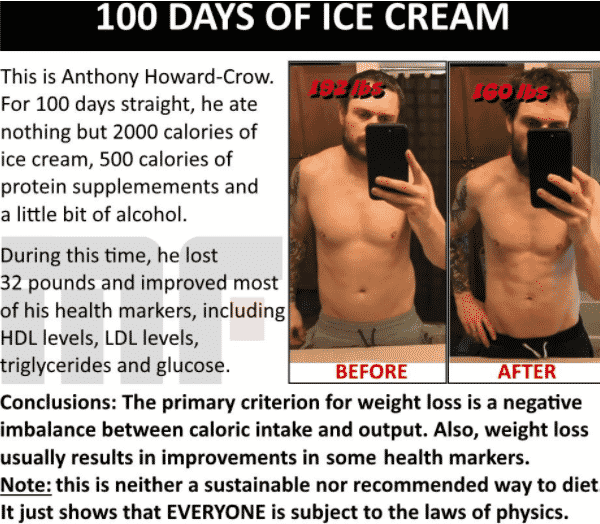
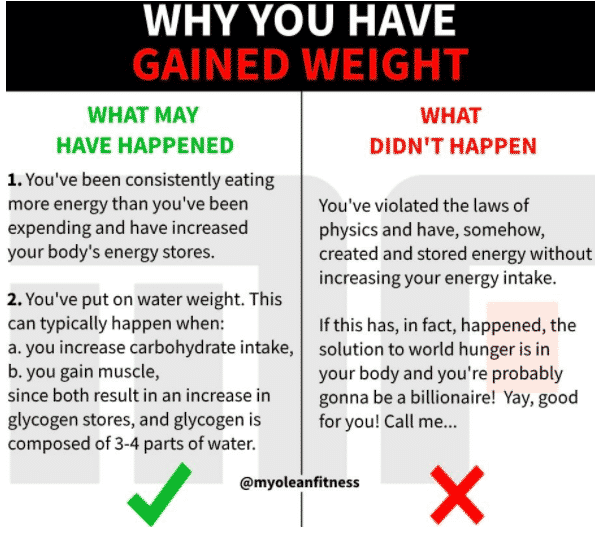
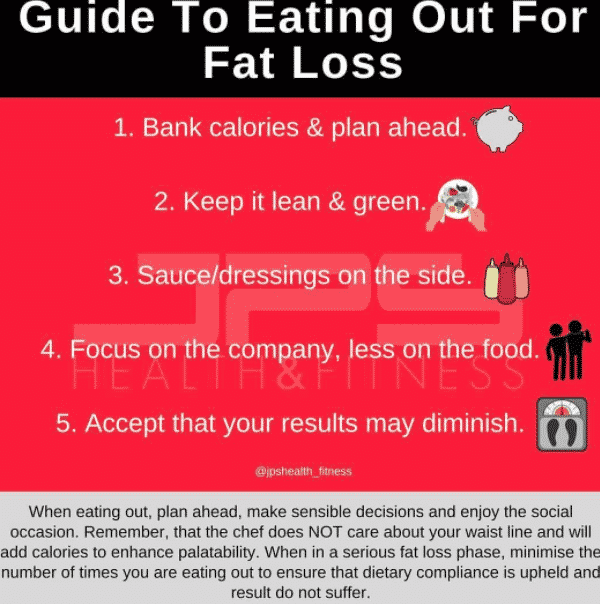
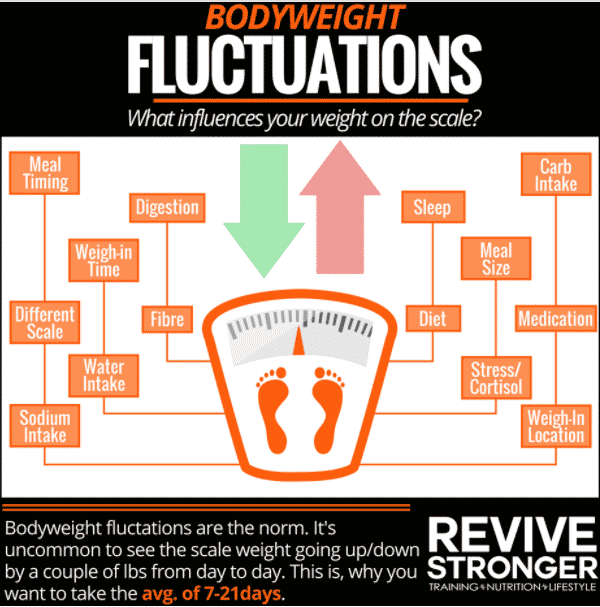
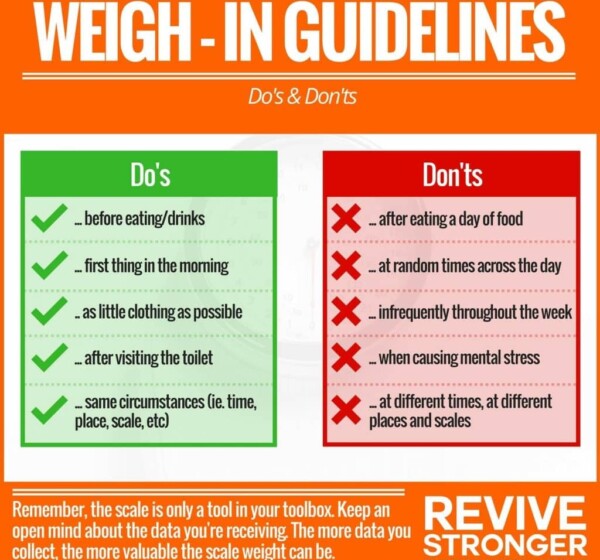
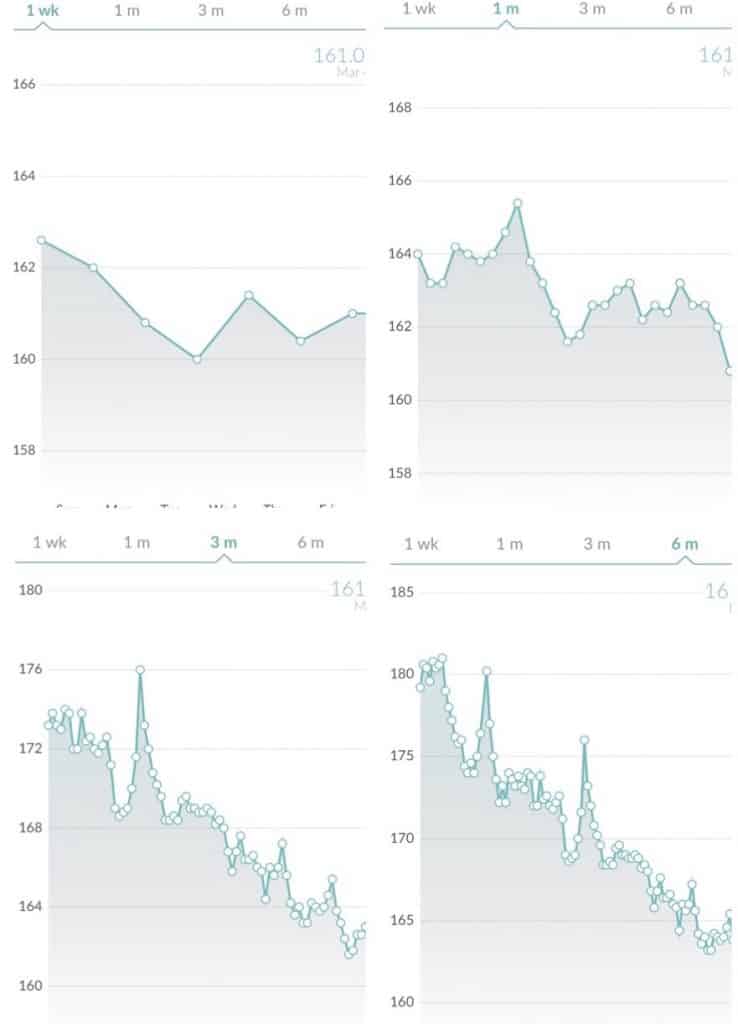


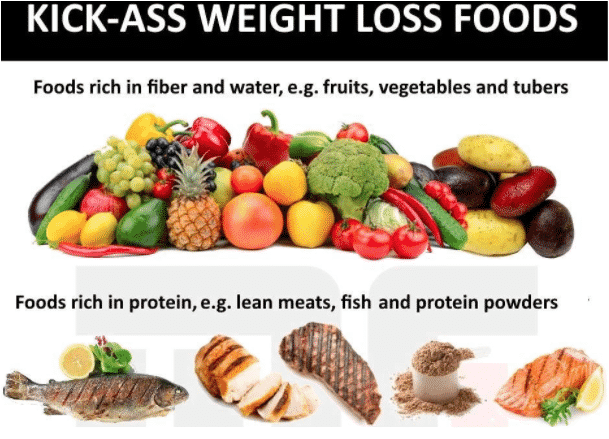
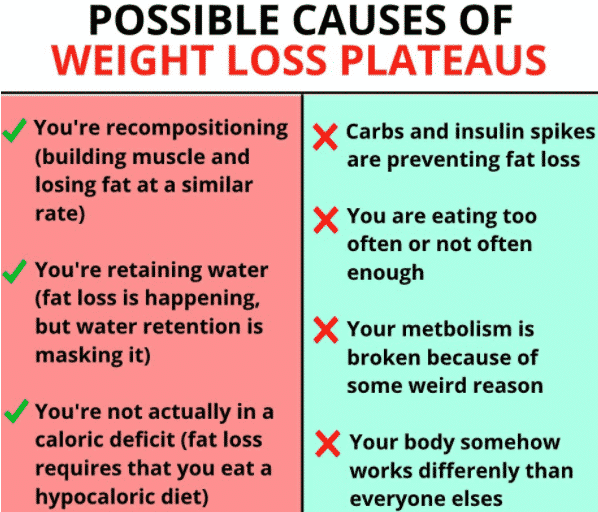
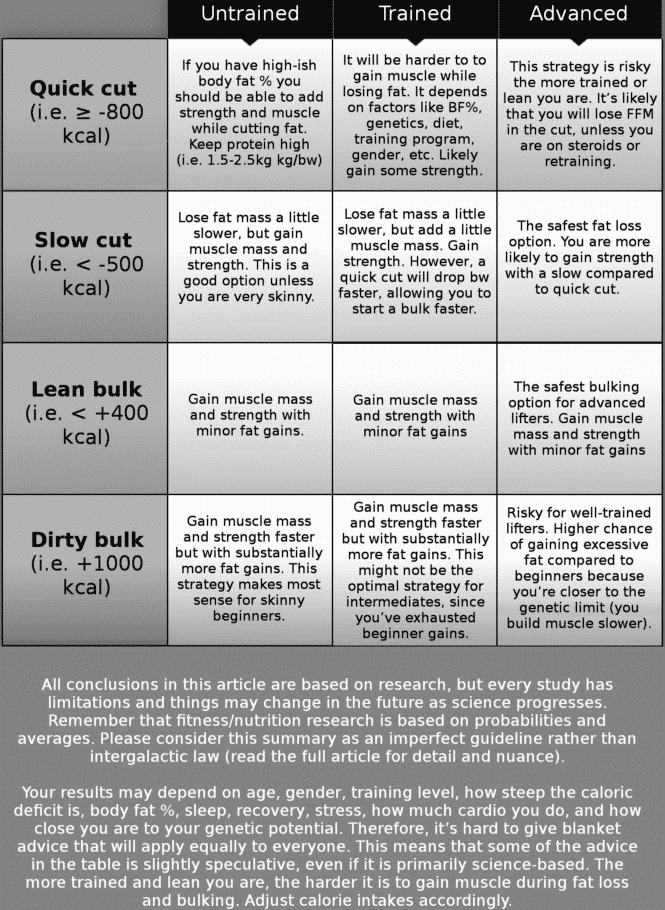

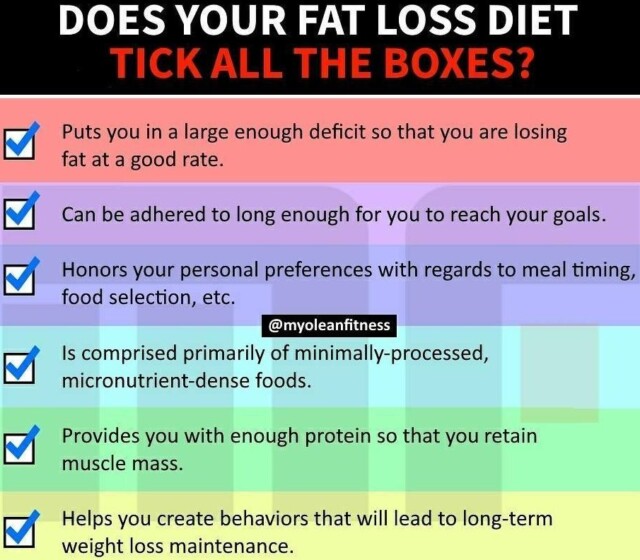

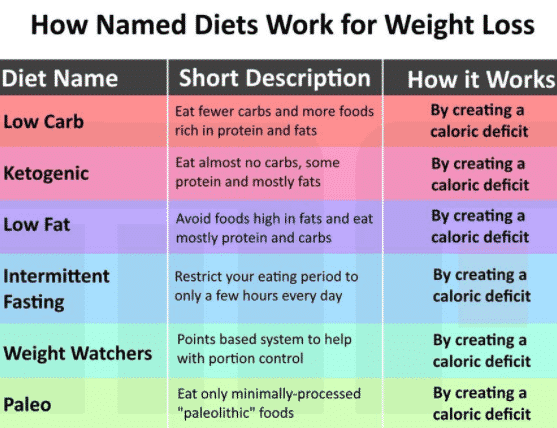
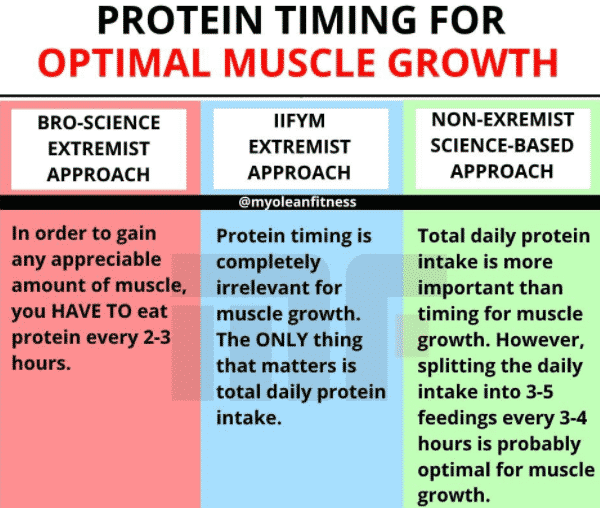
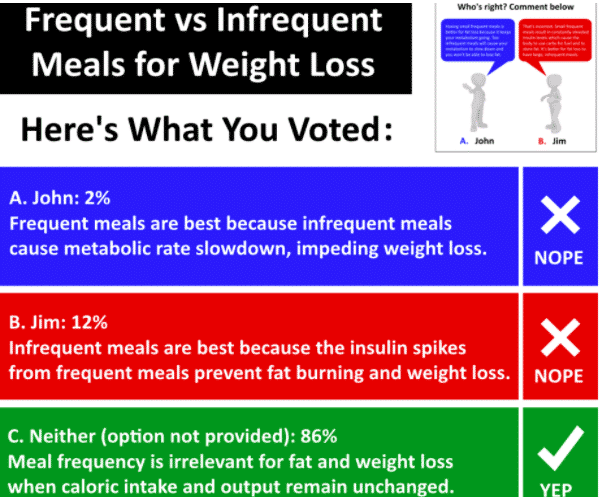
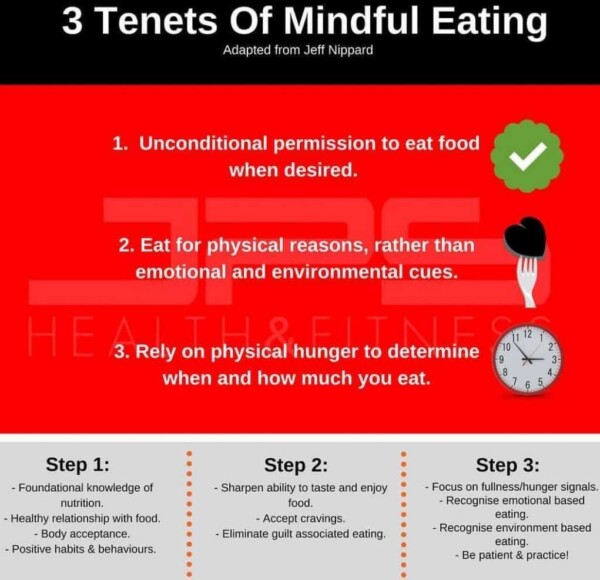
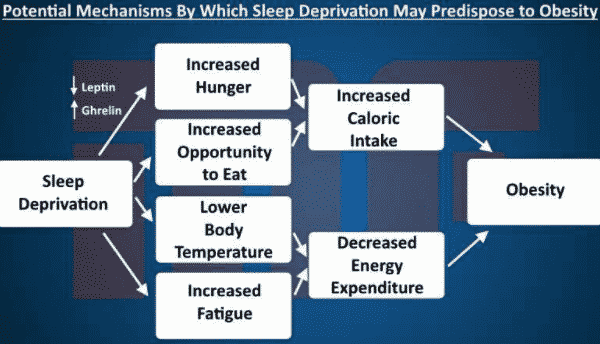
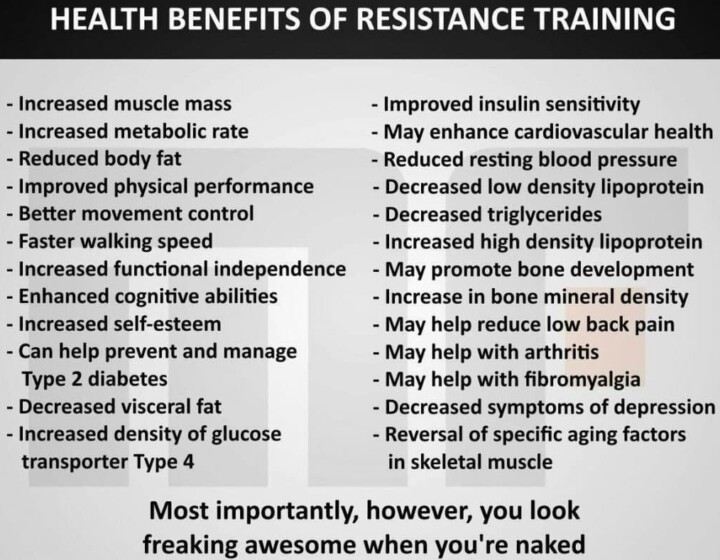
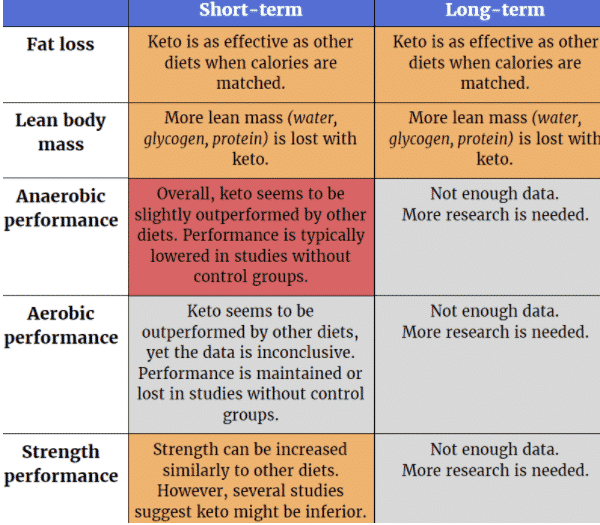
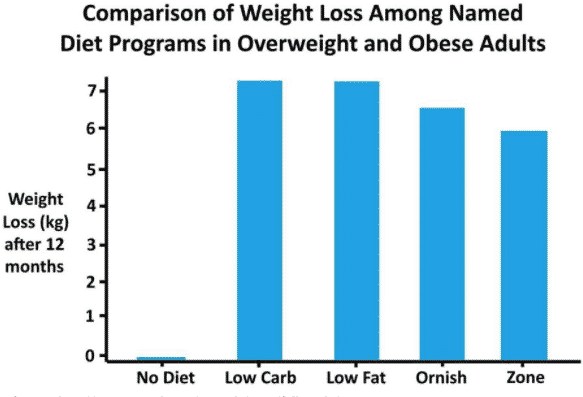

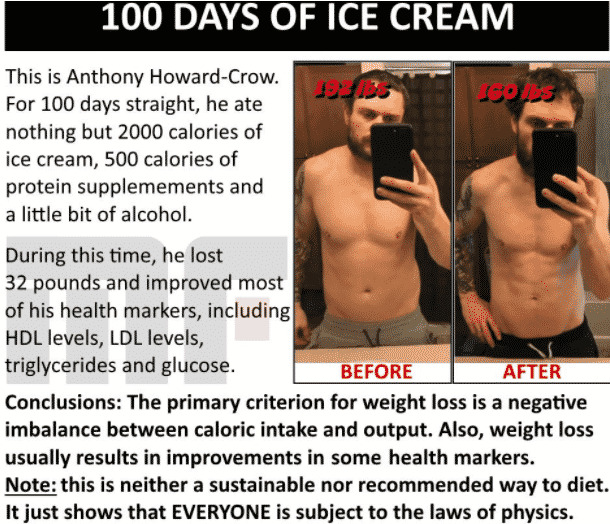
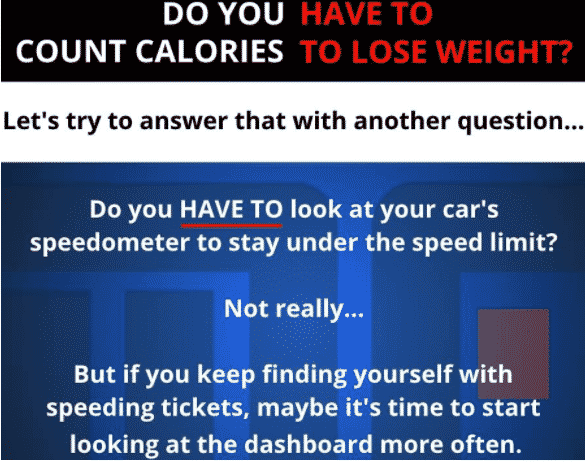
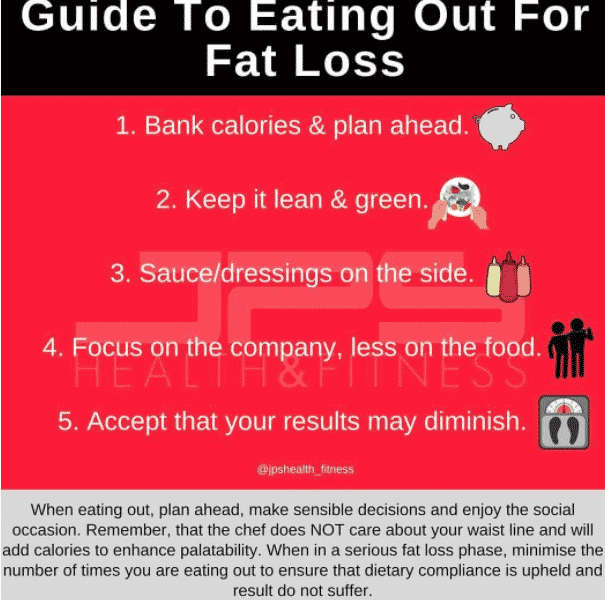
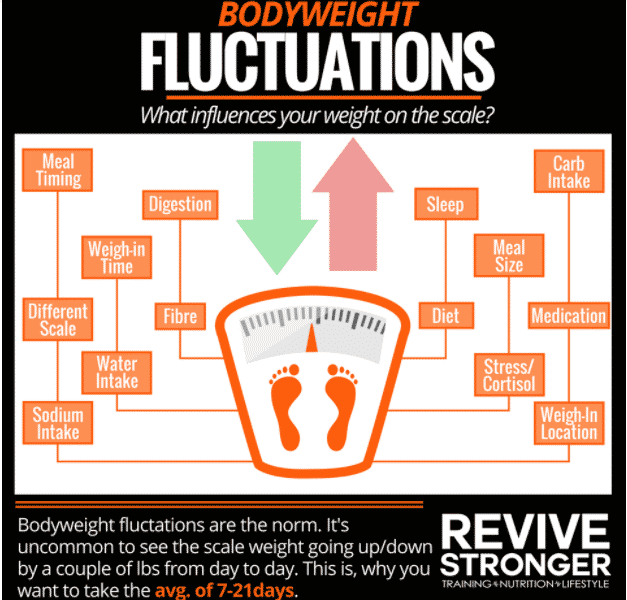
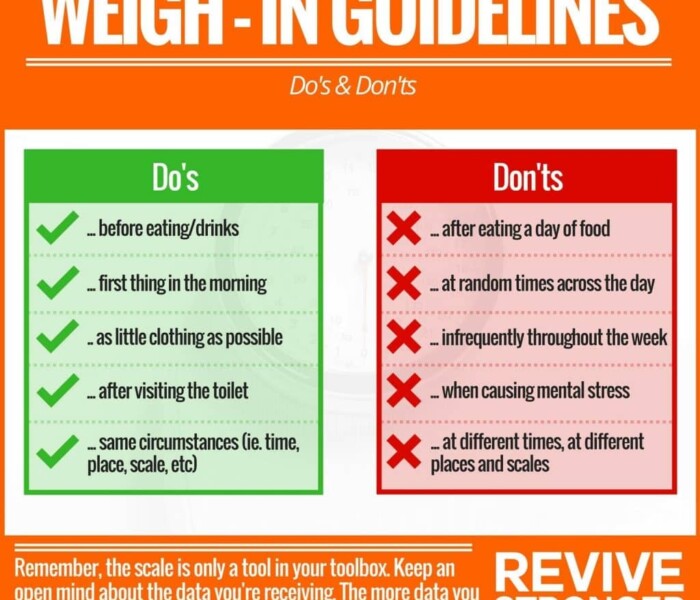
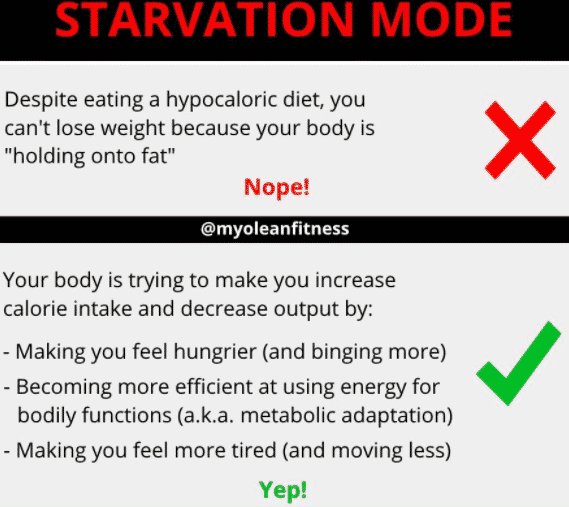
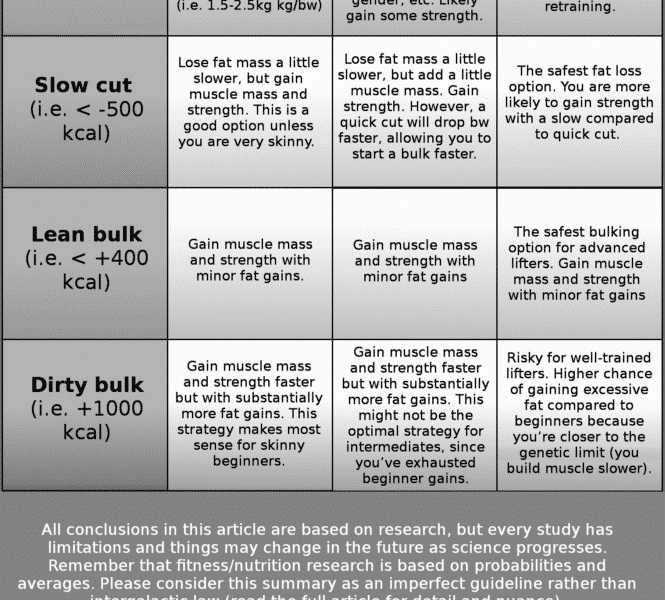
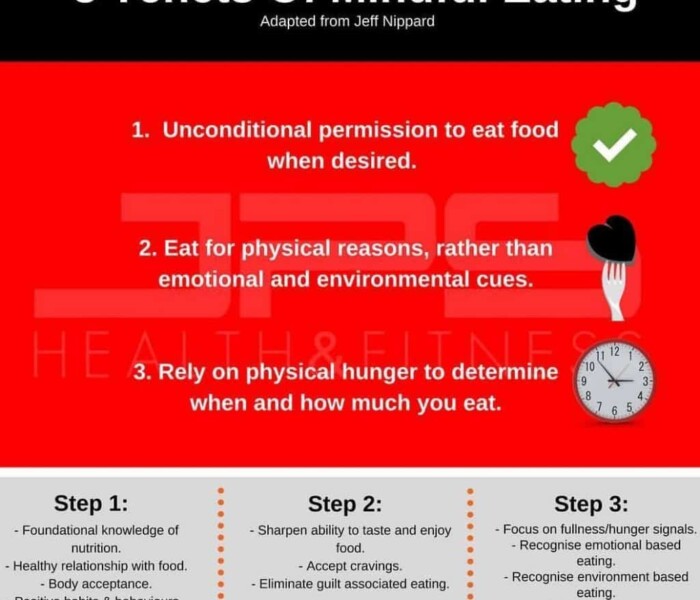
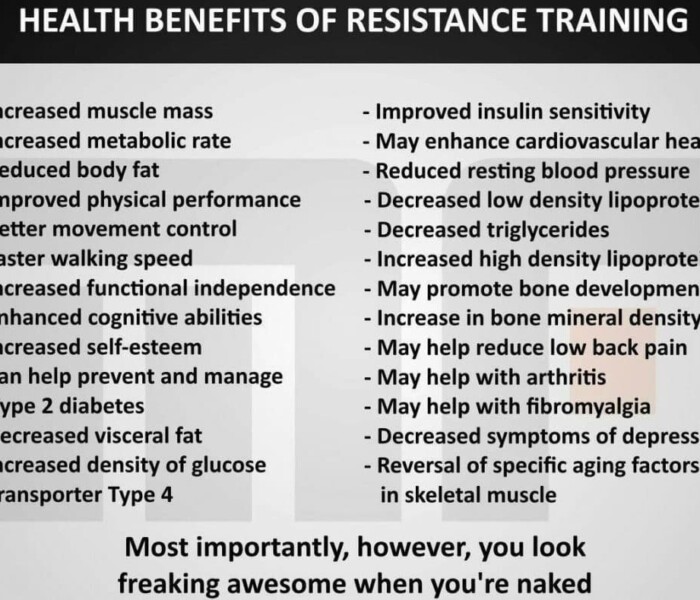
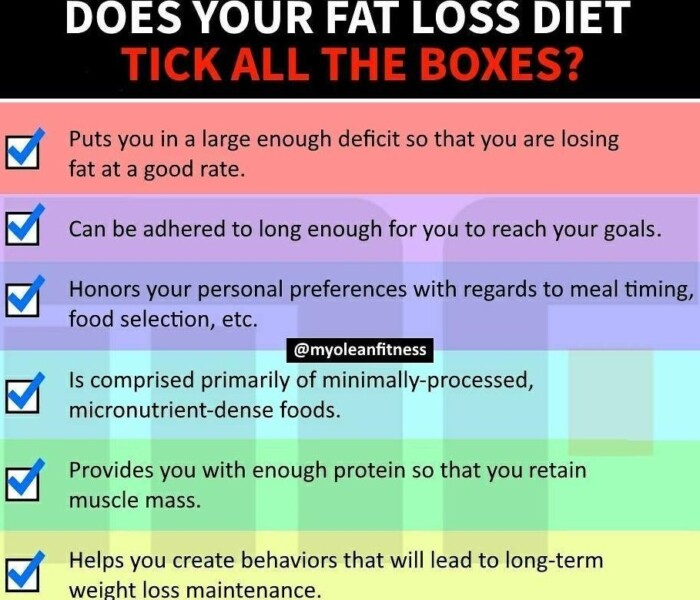
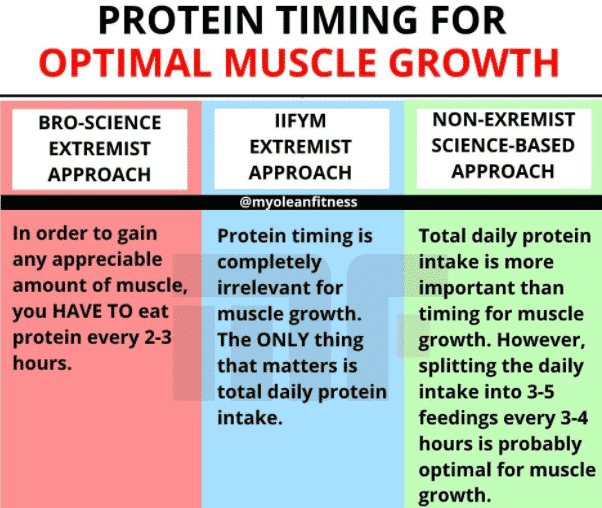
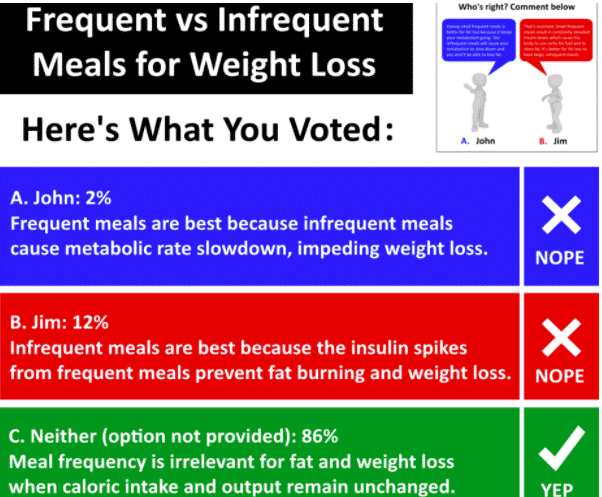
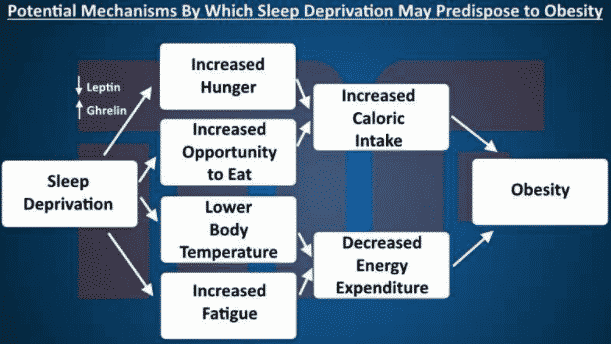
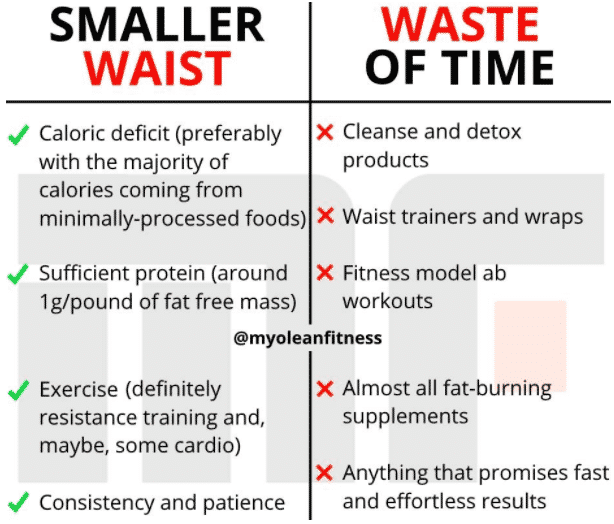
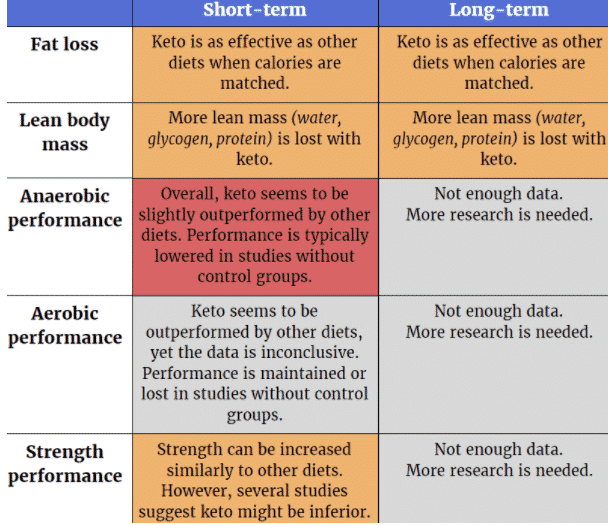
3,502 Comments
Comments are closed.